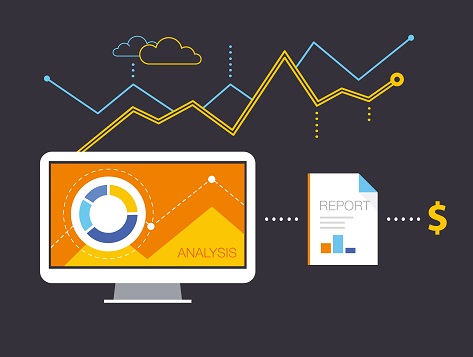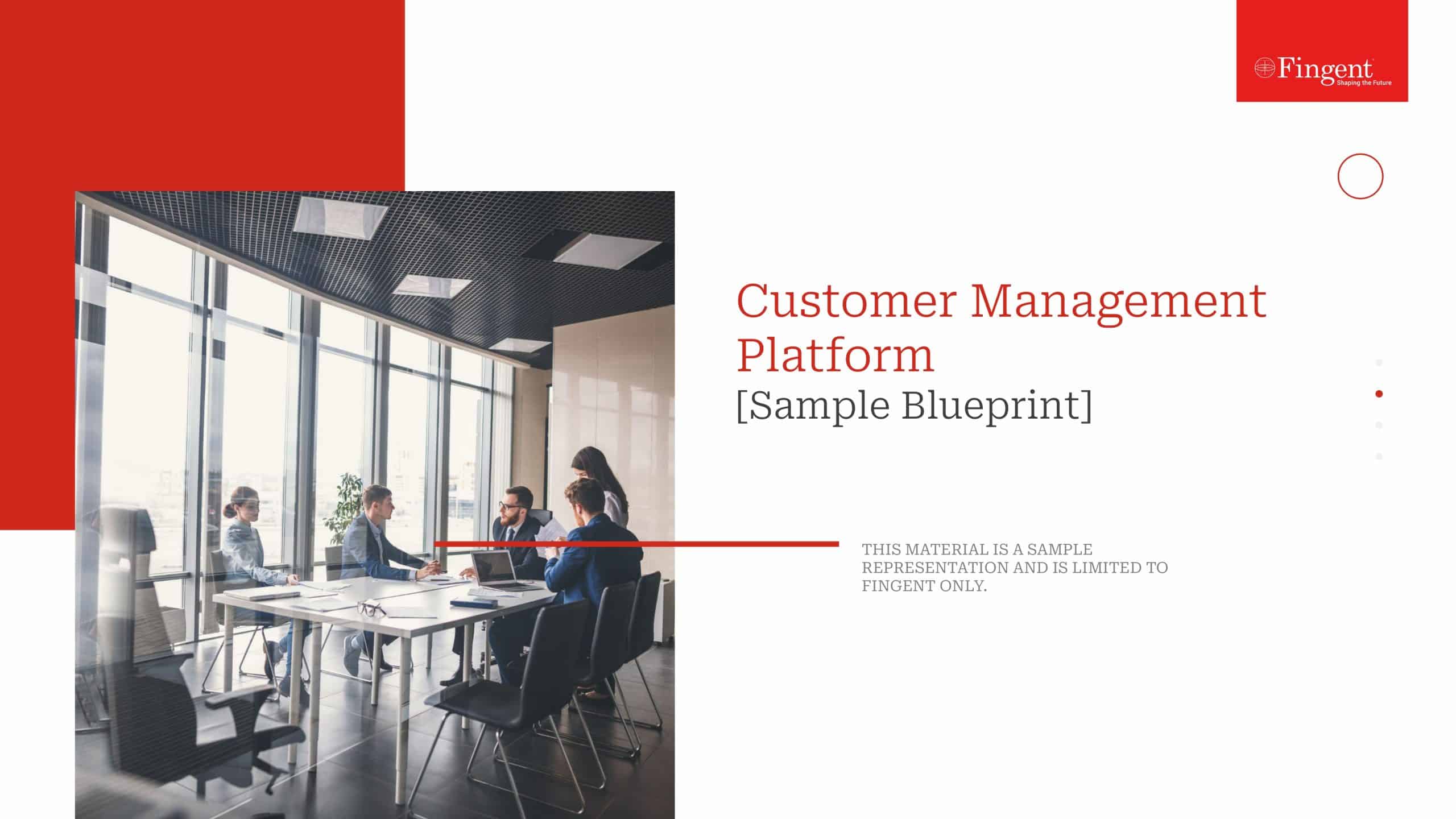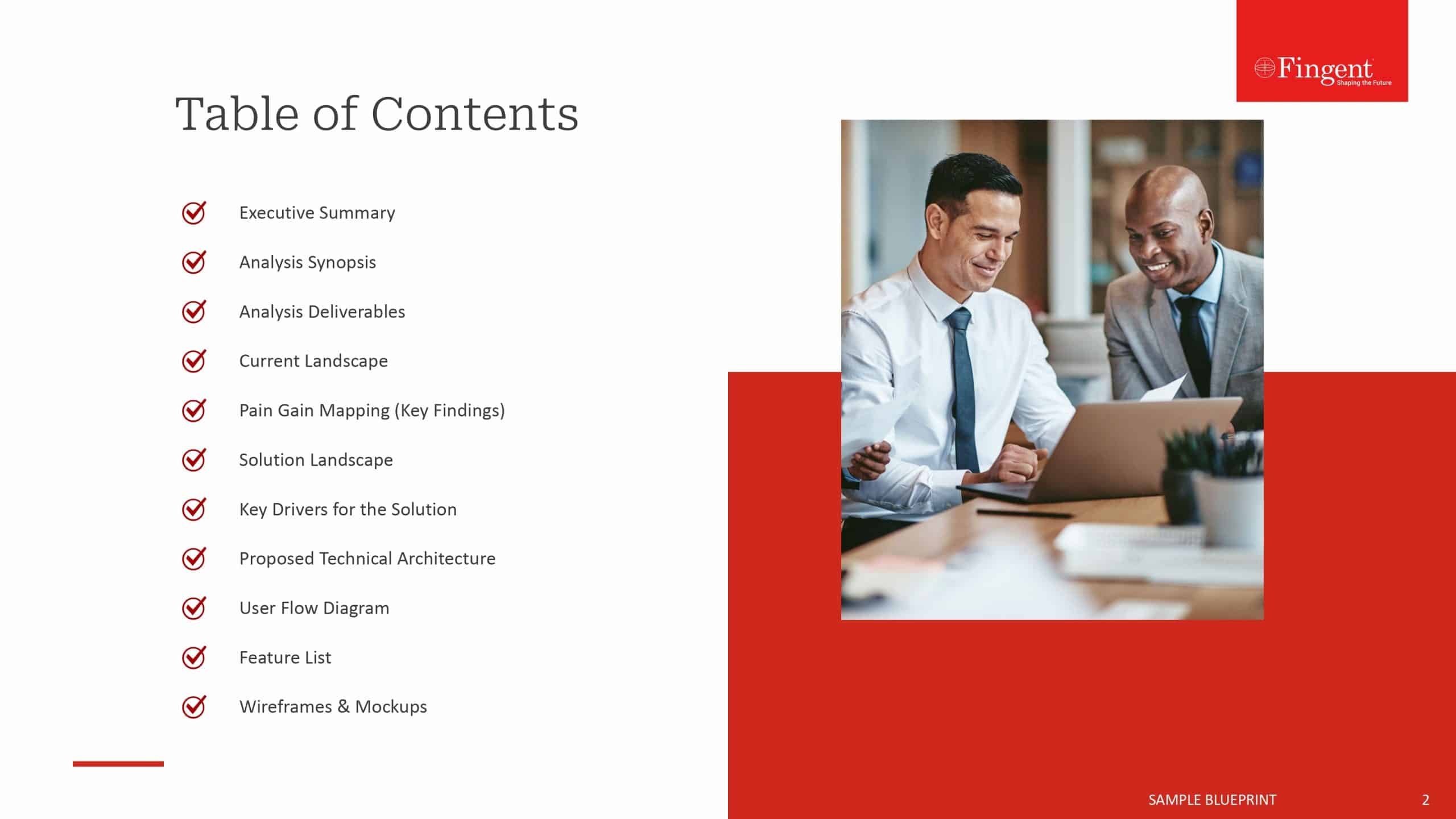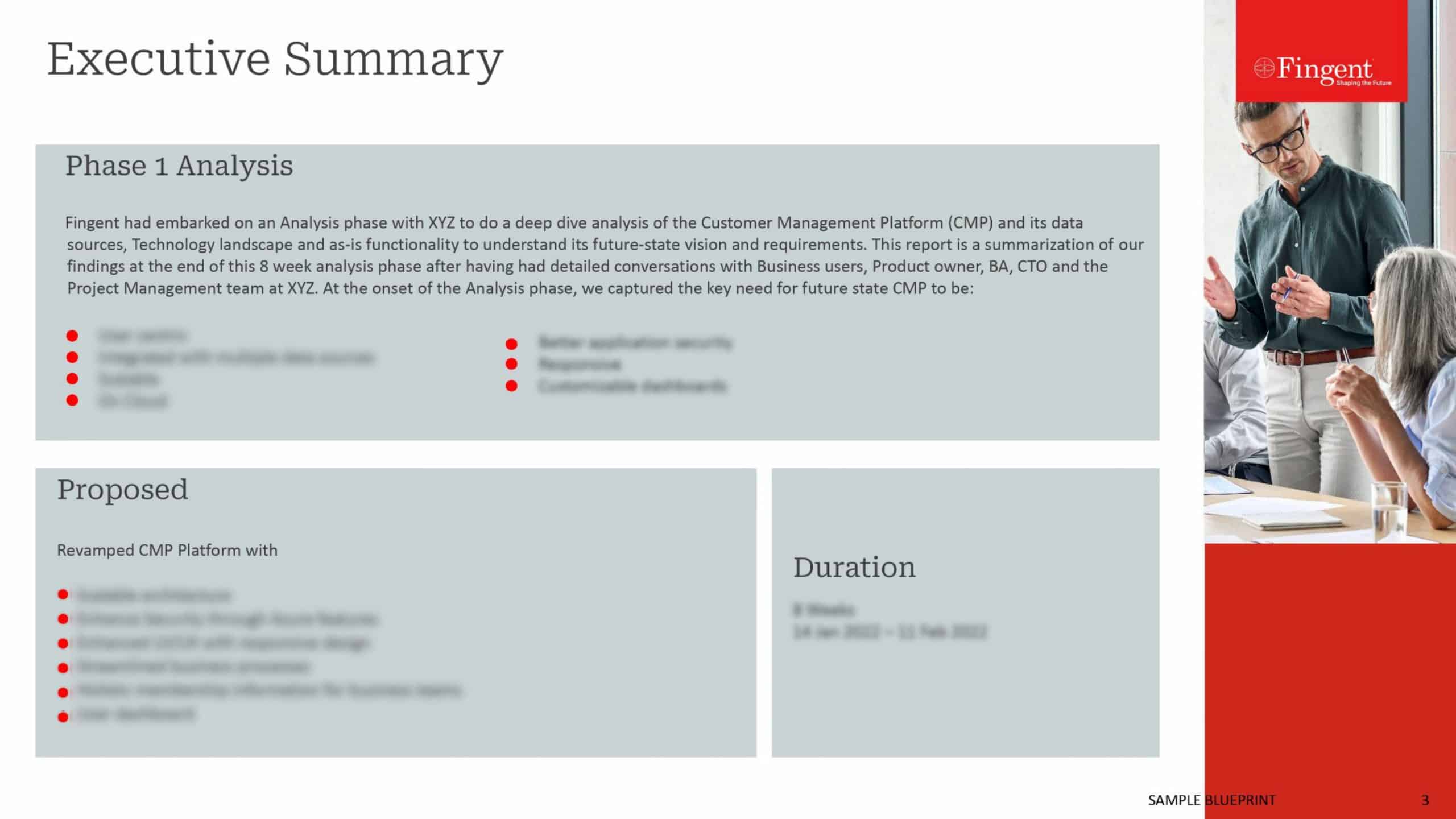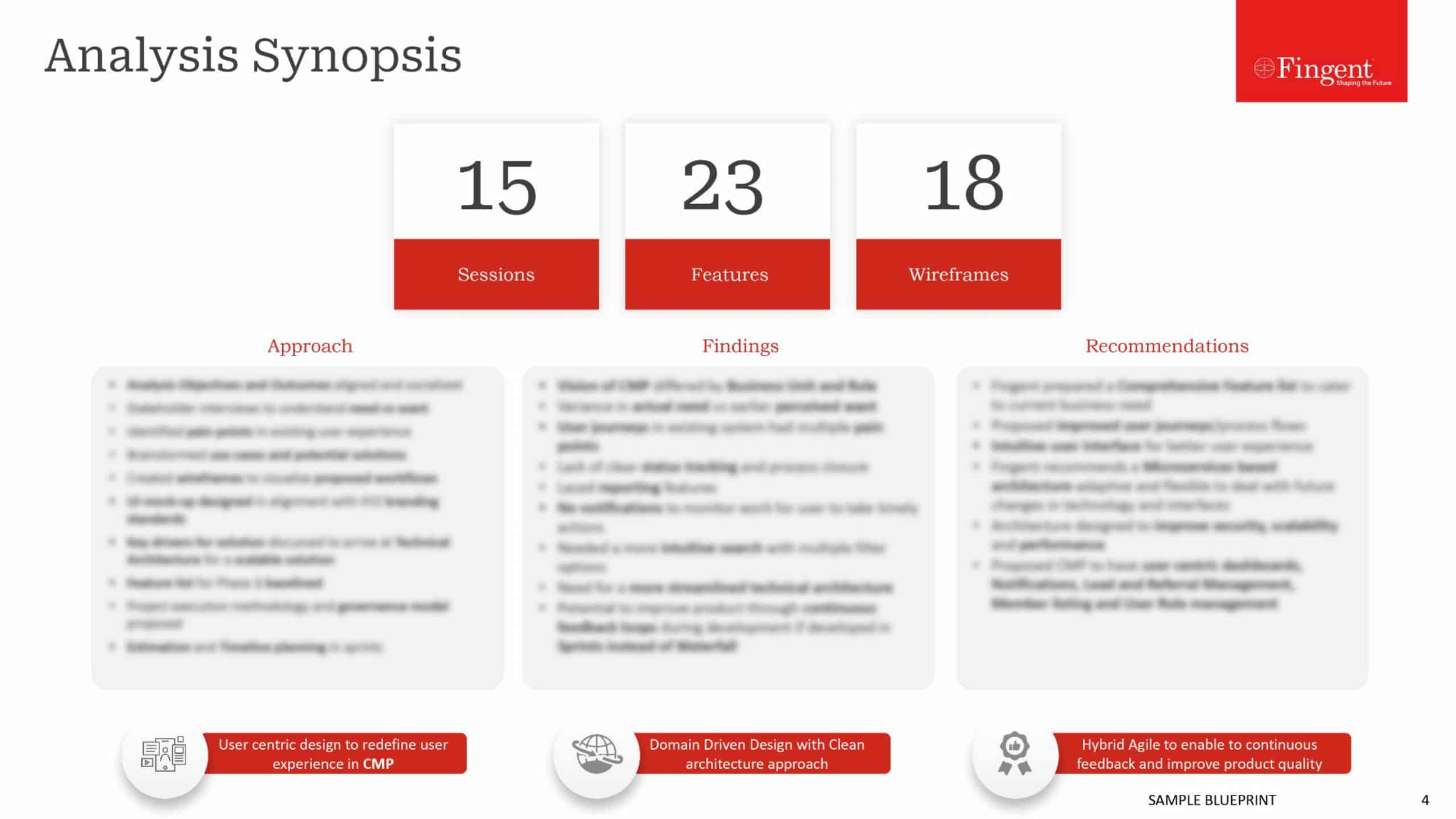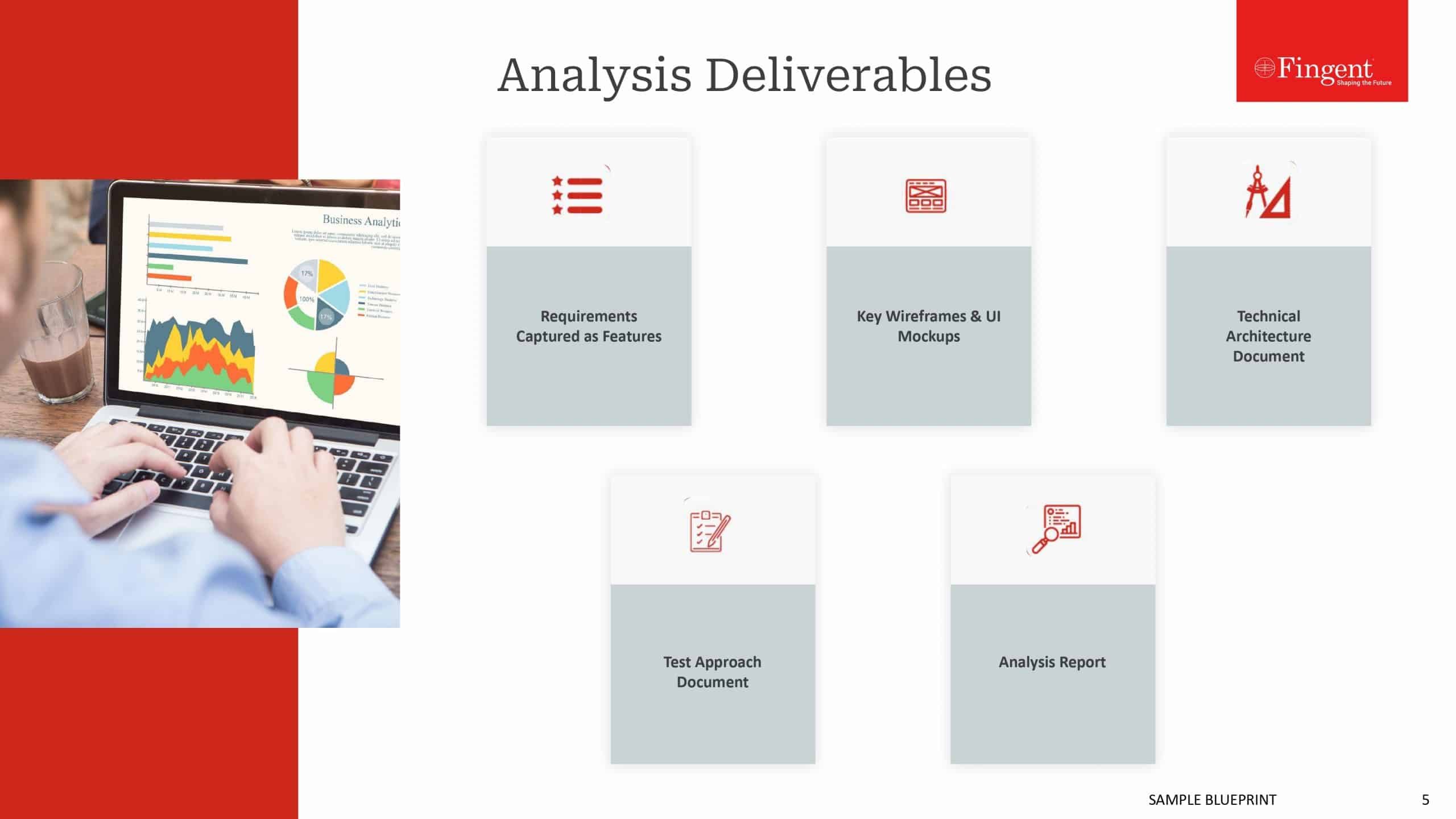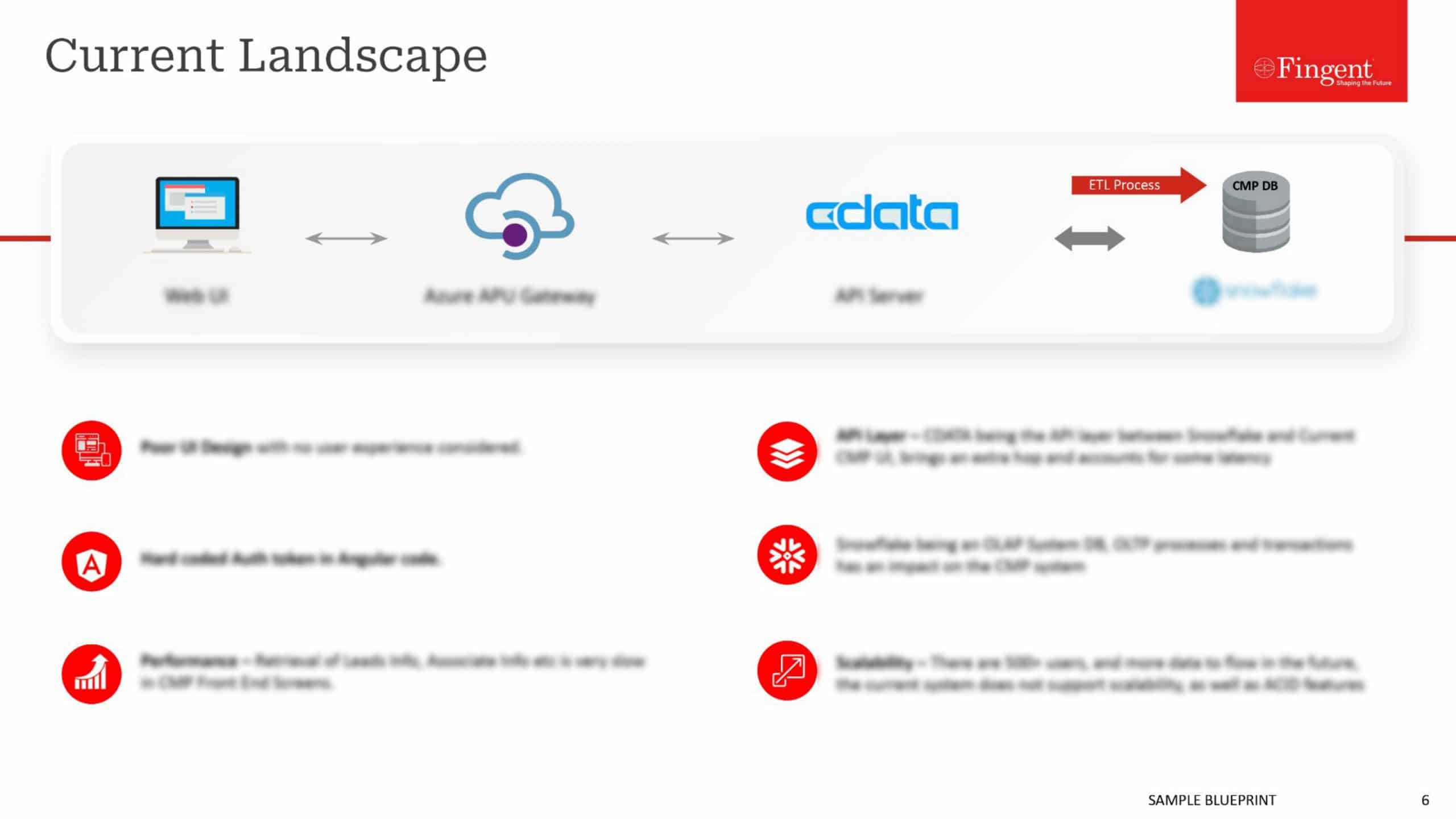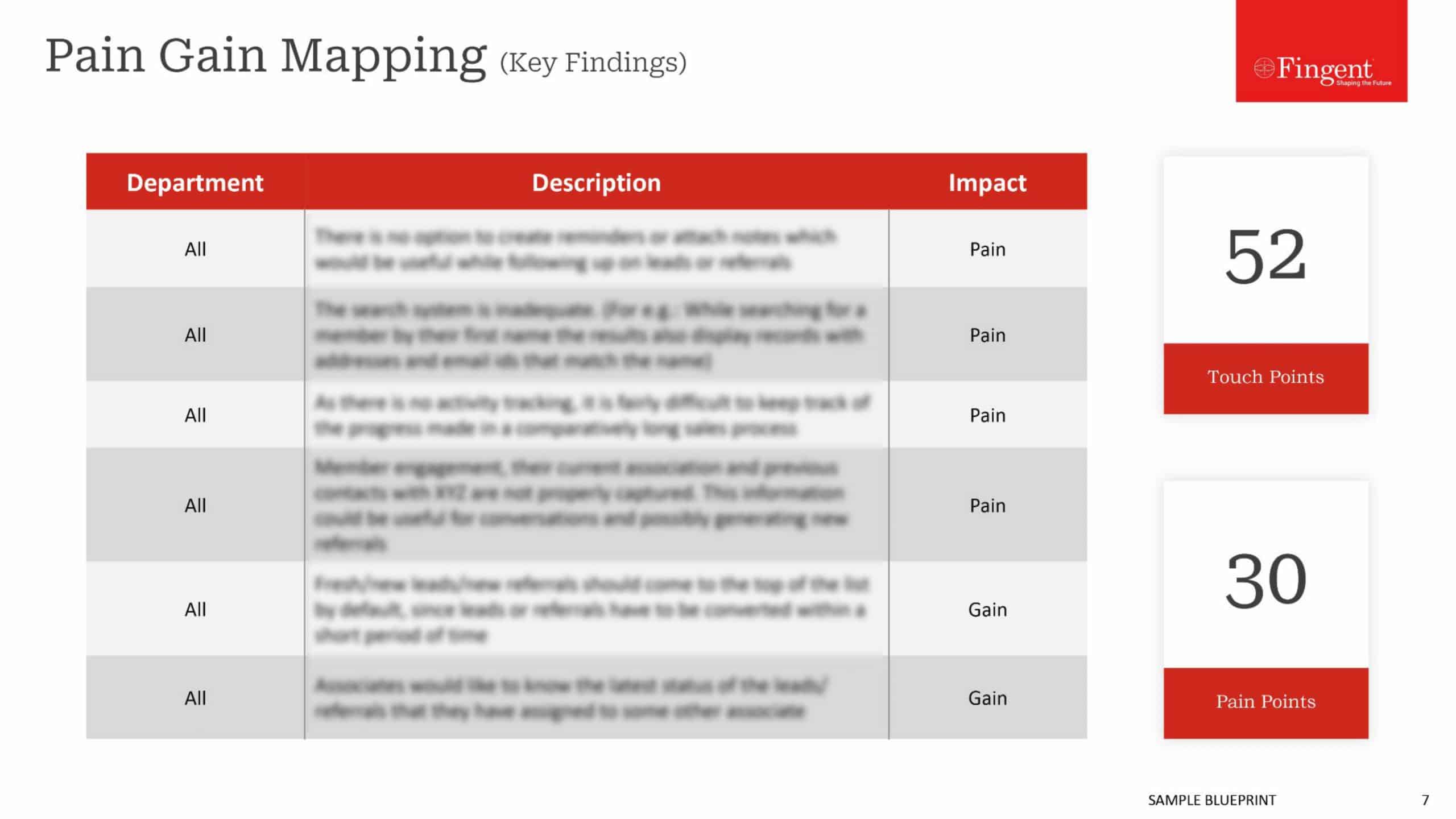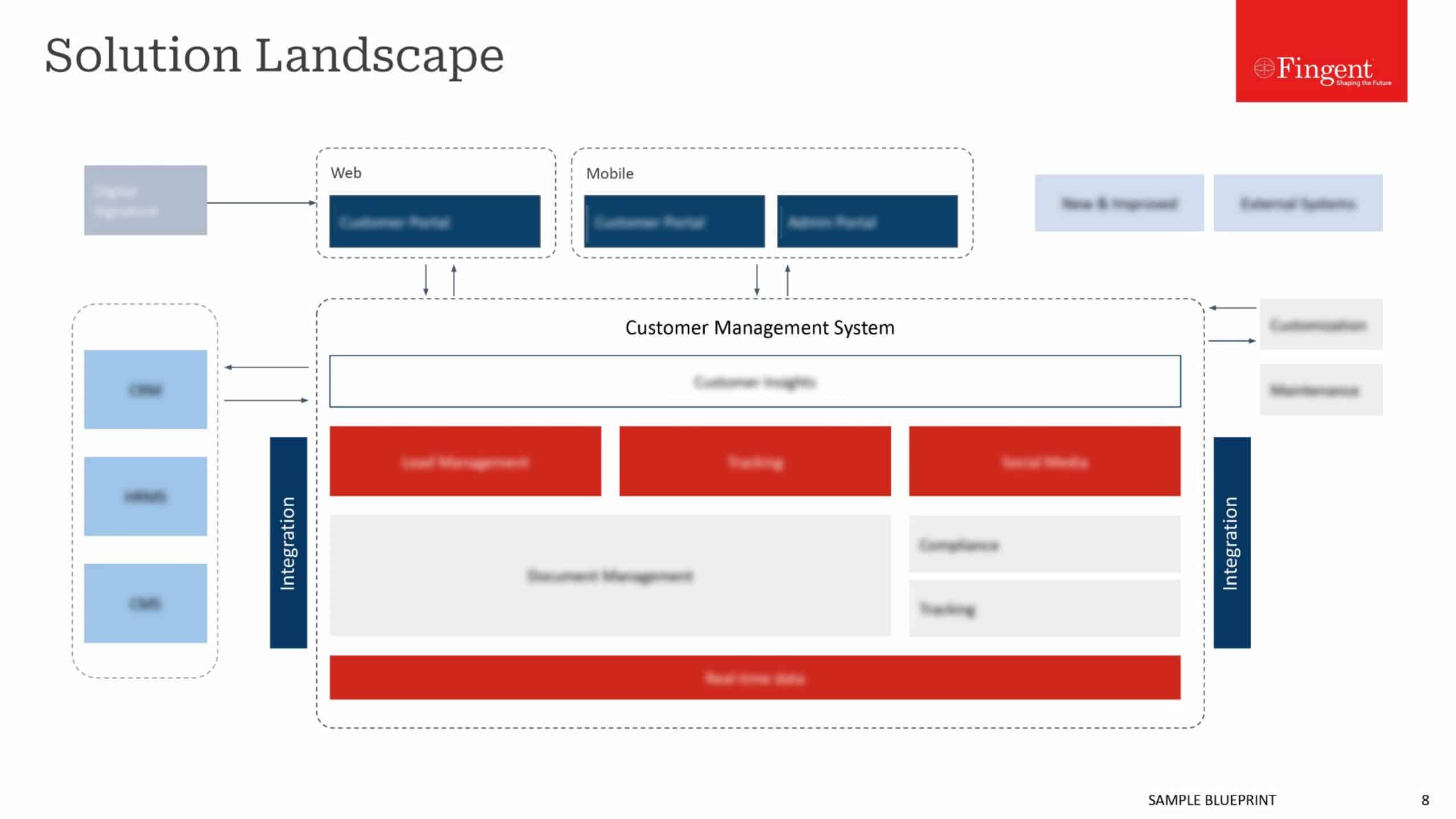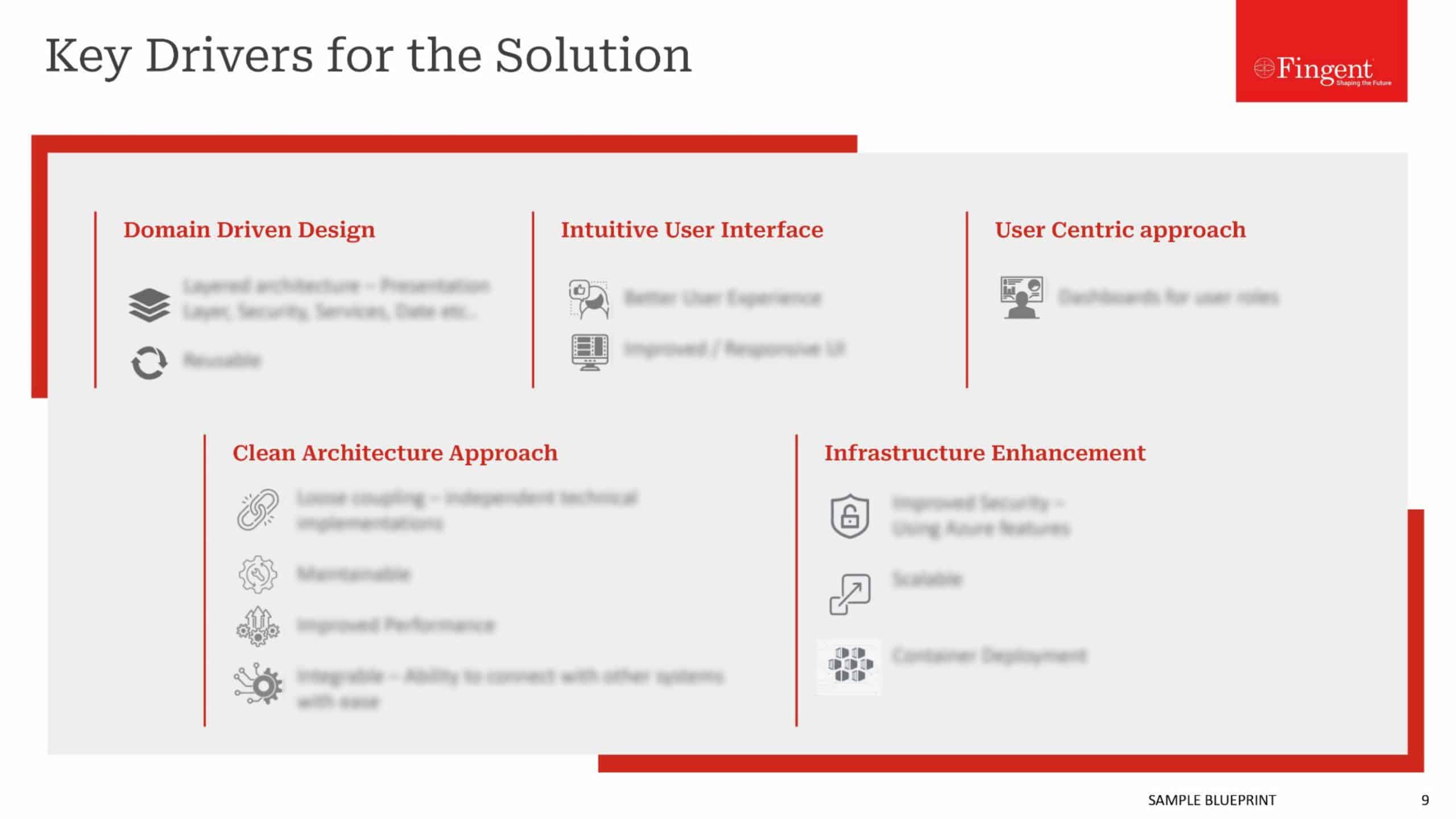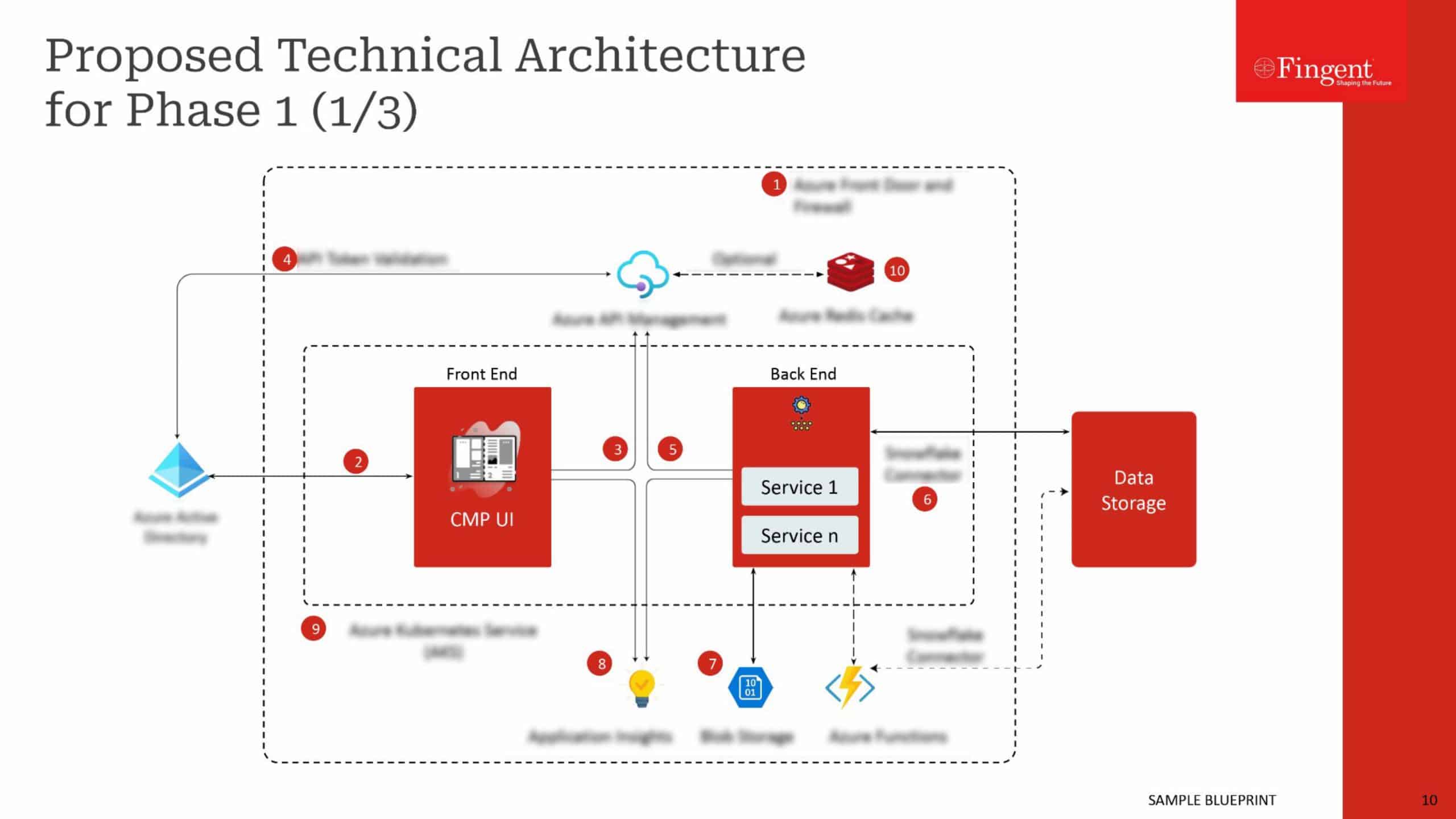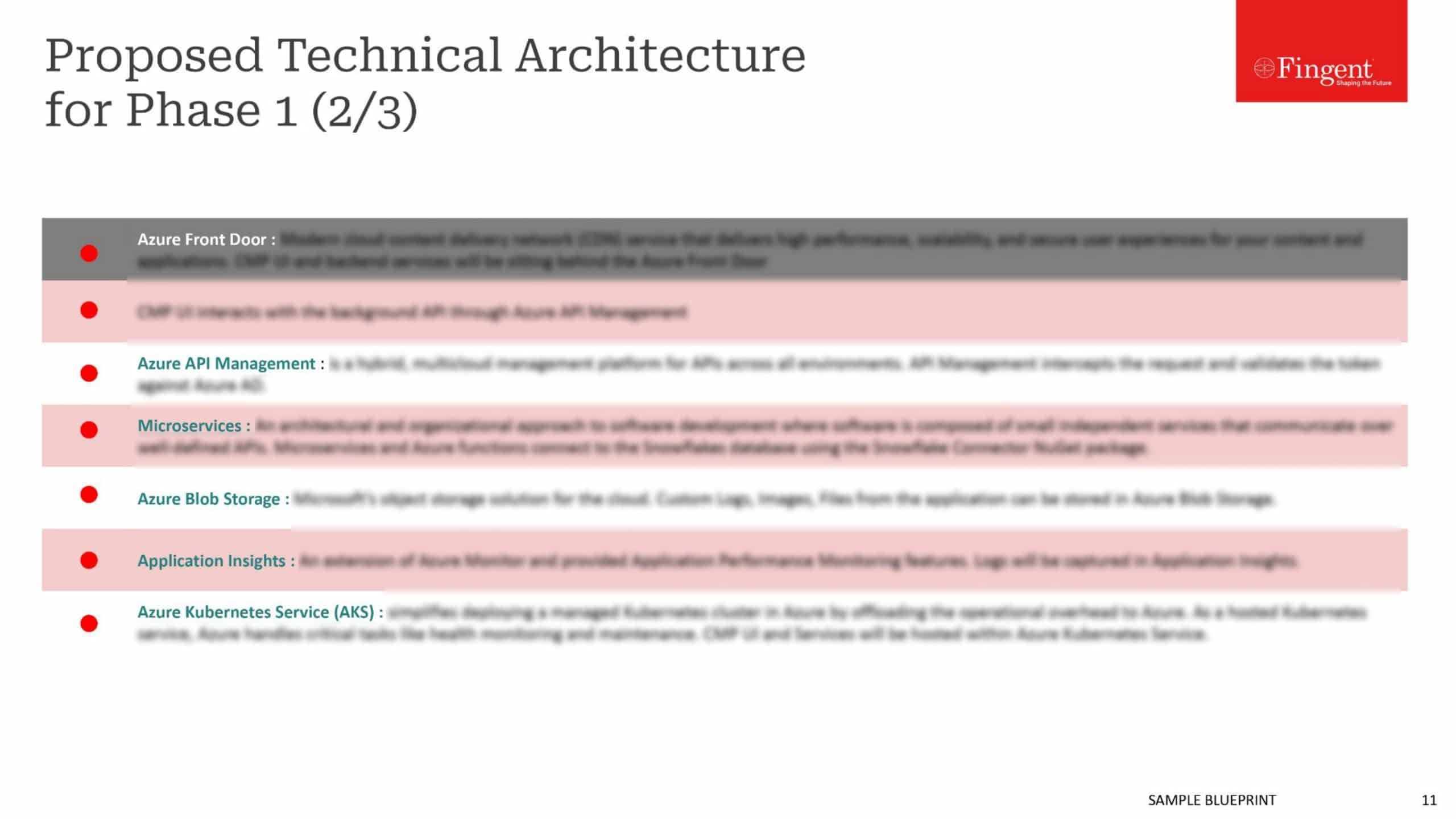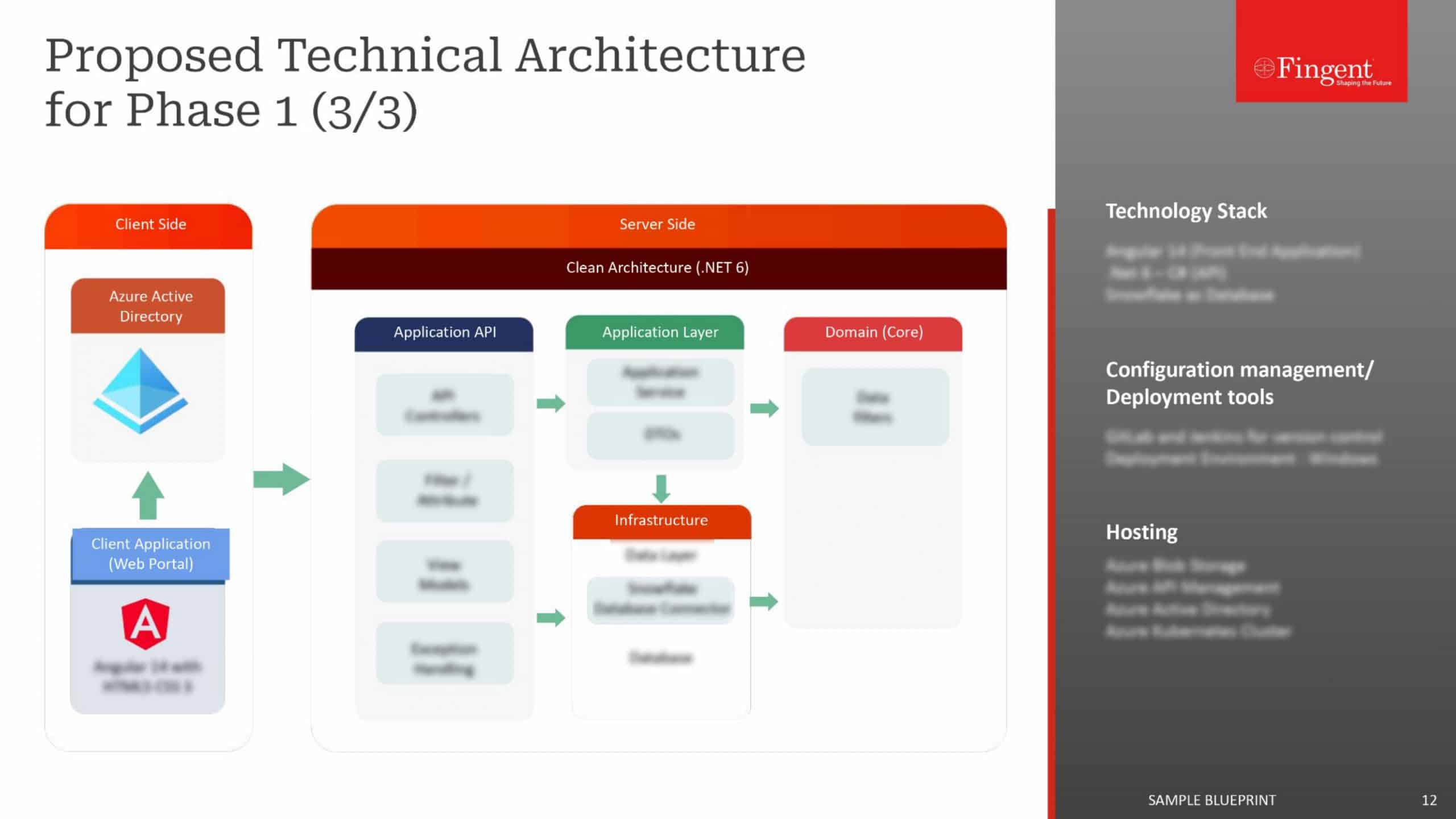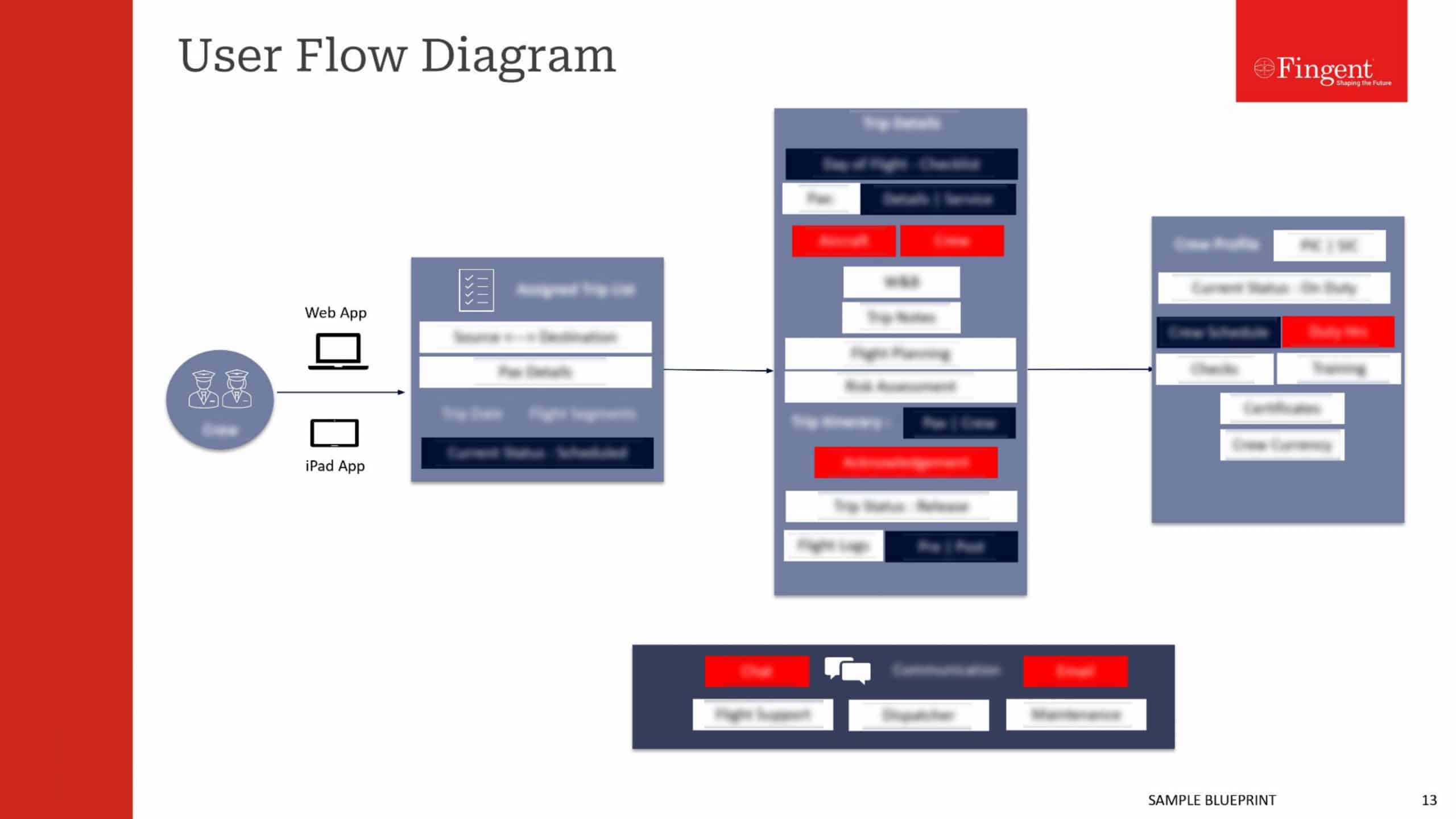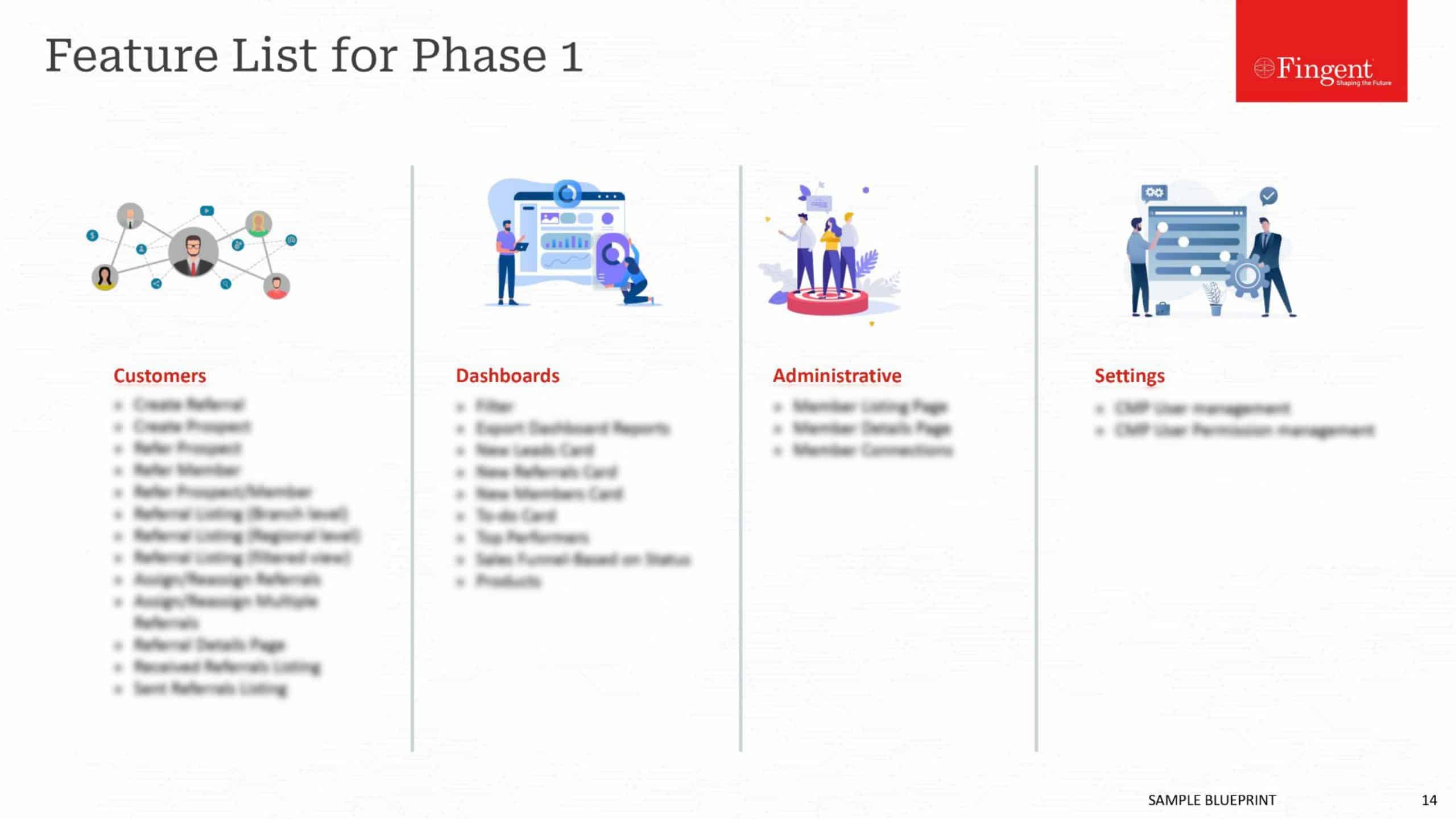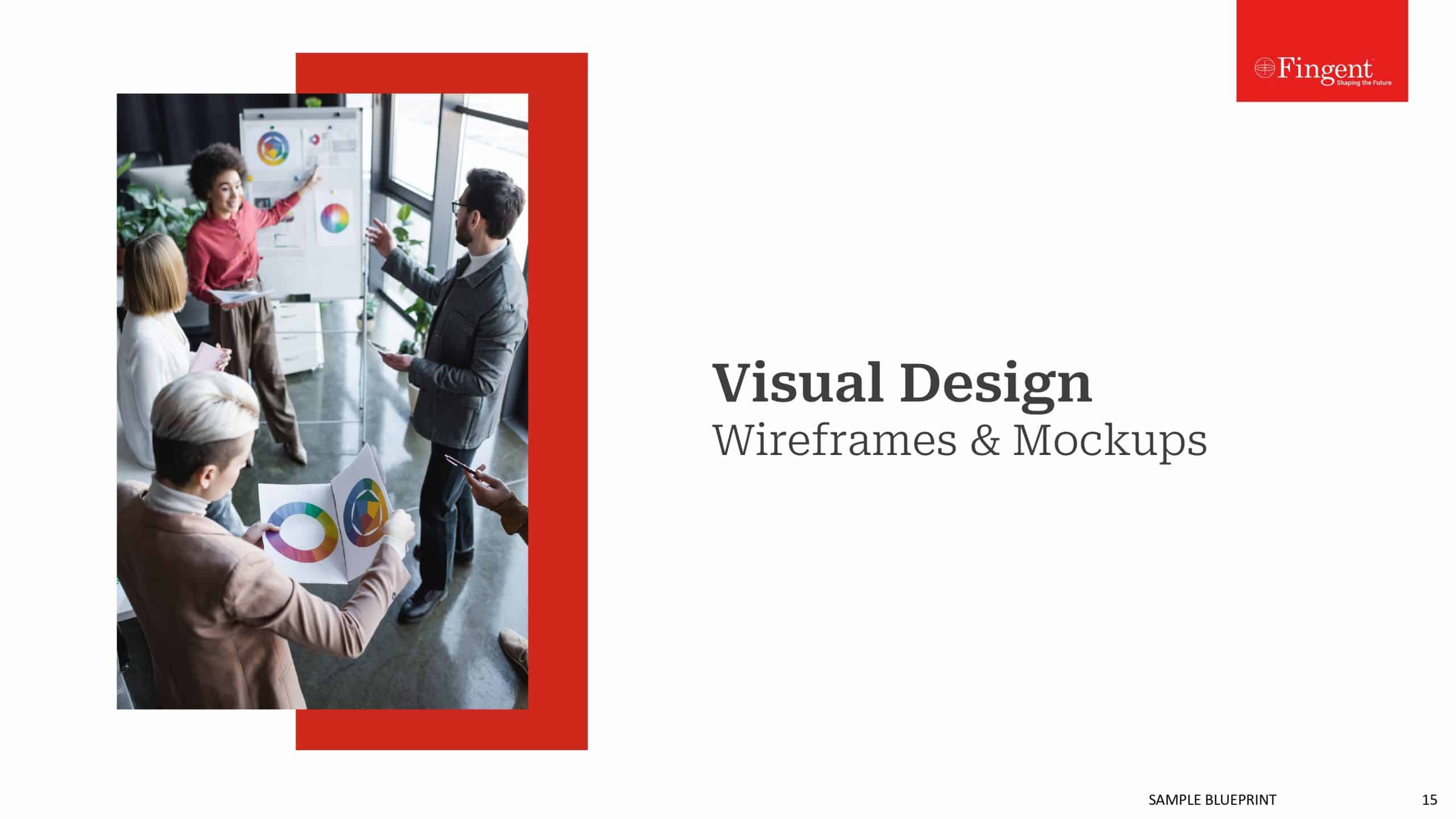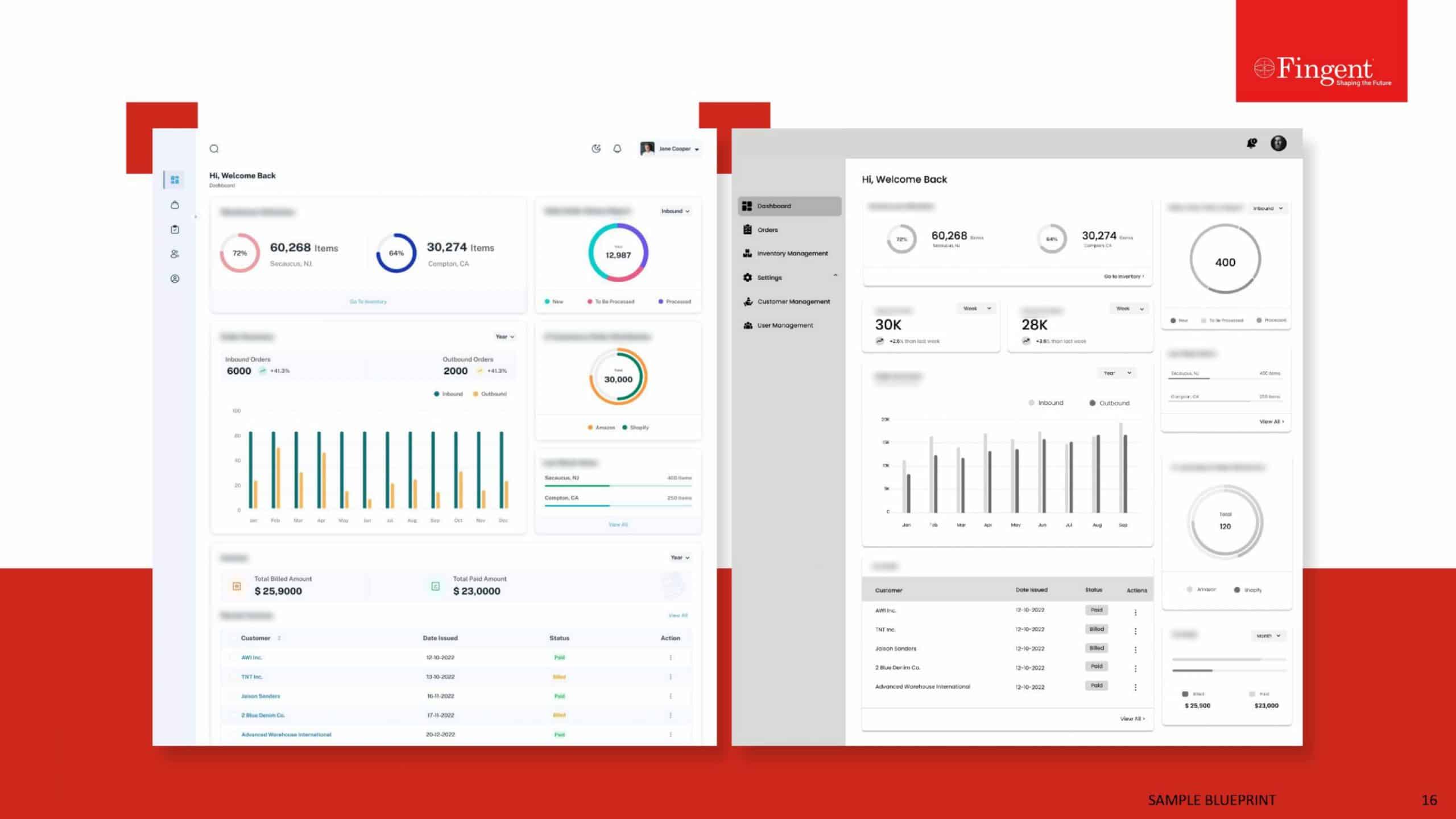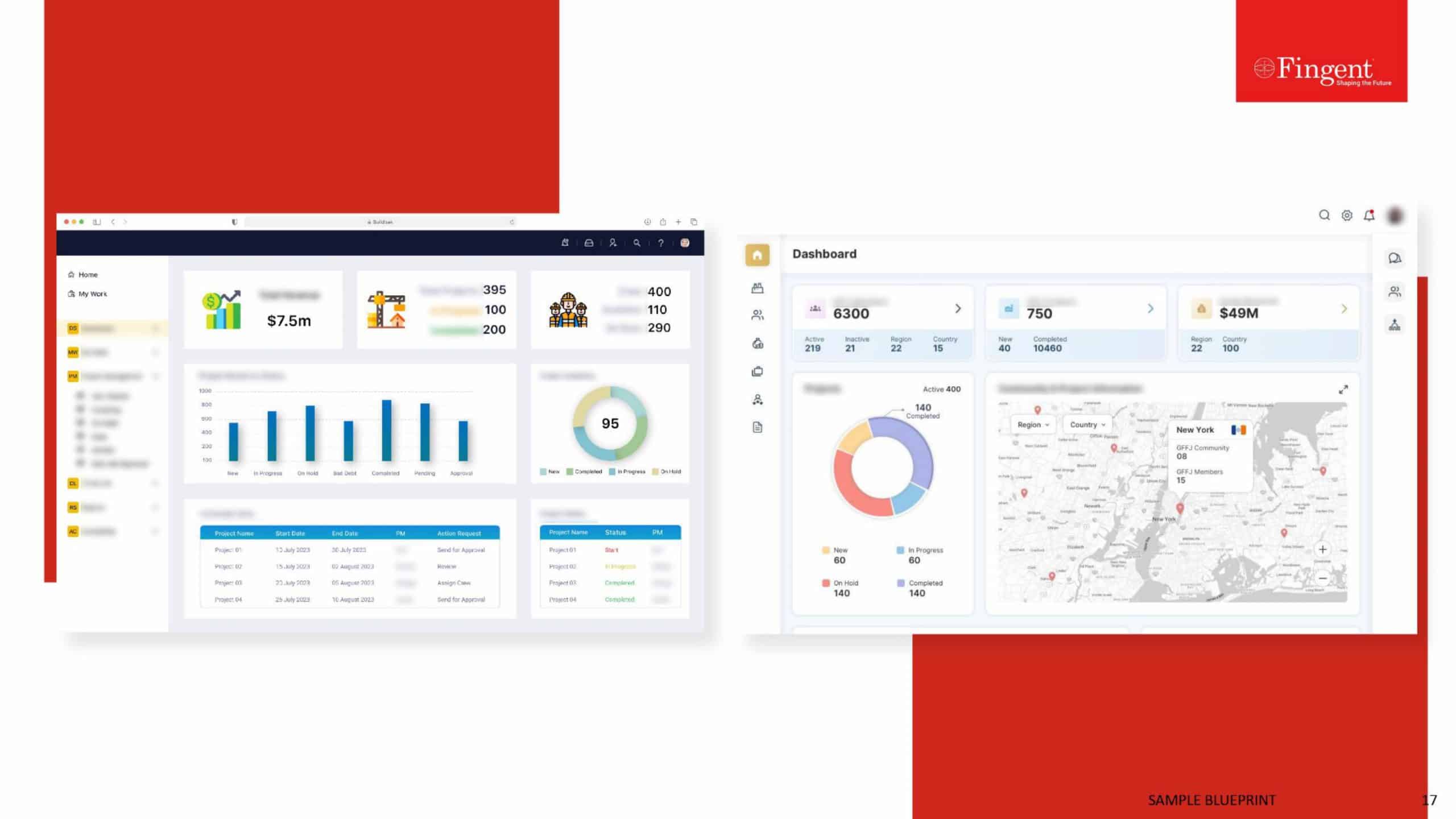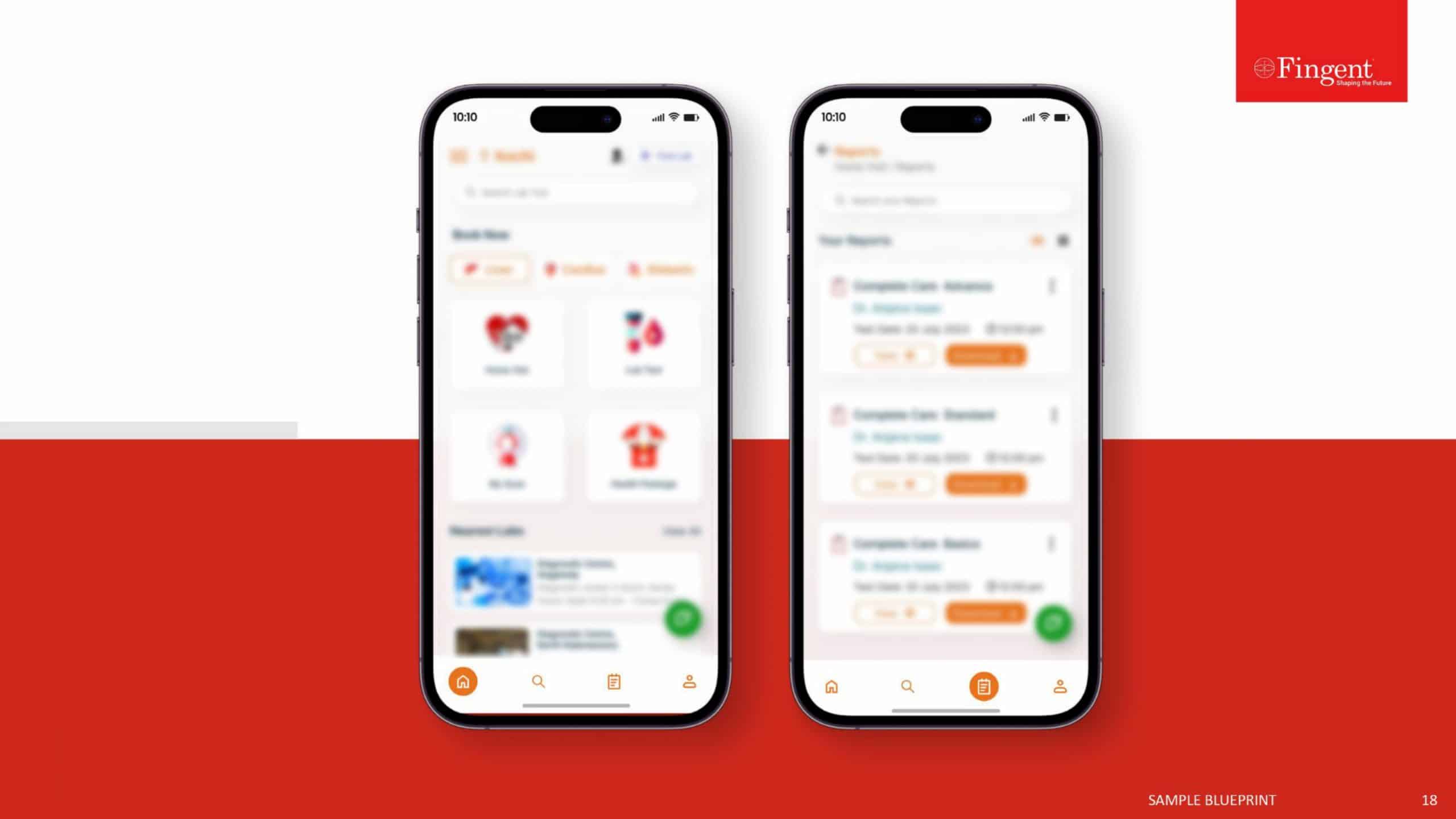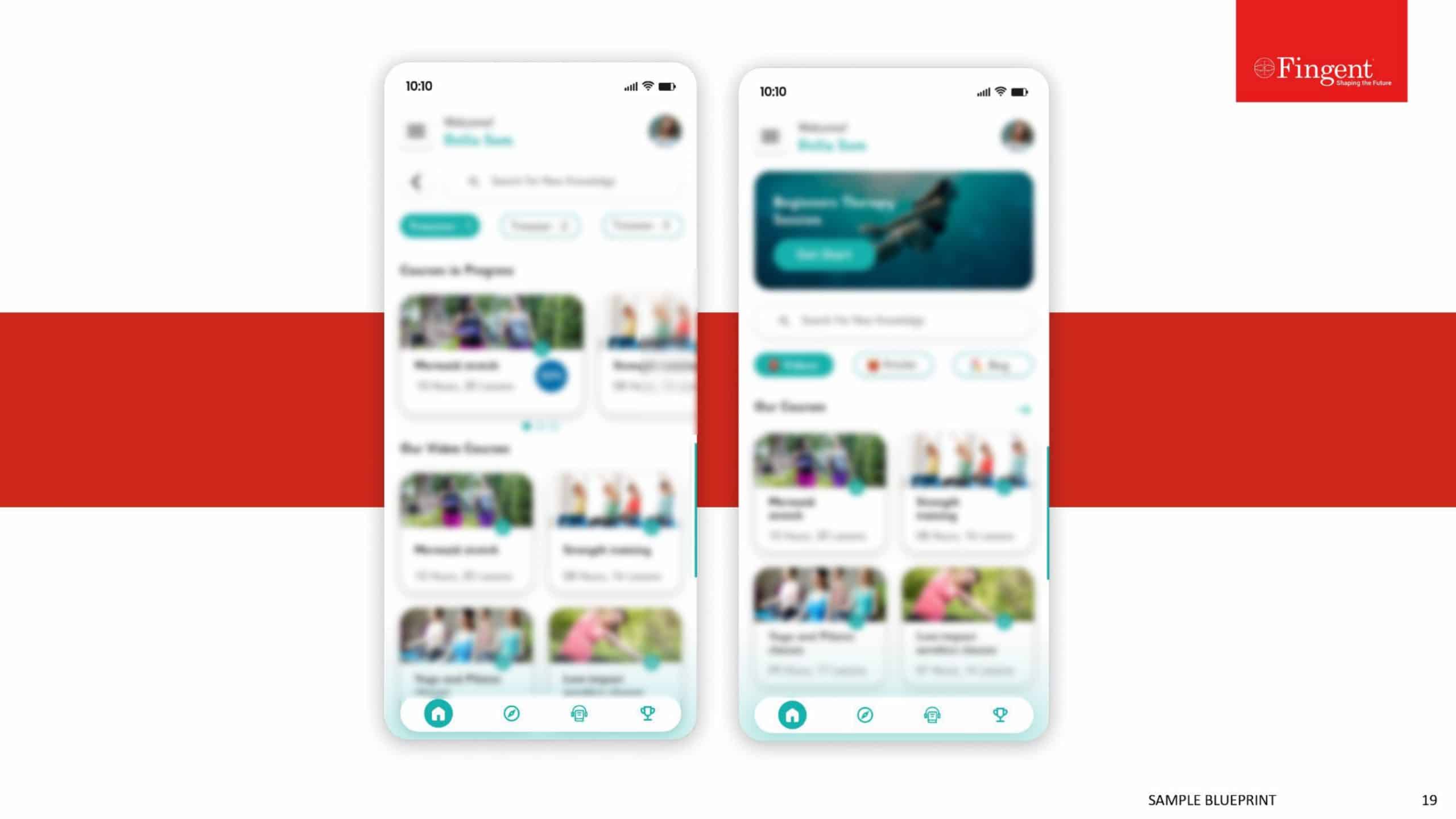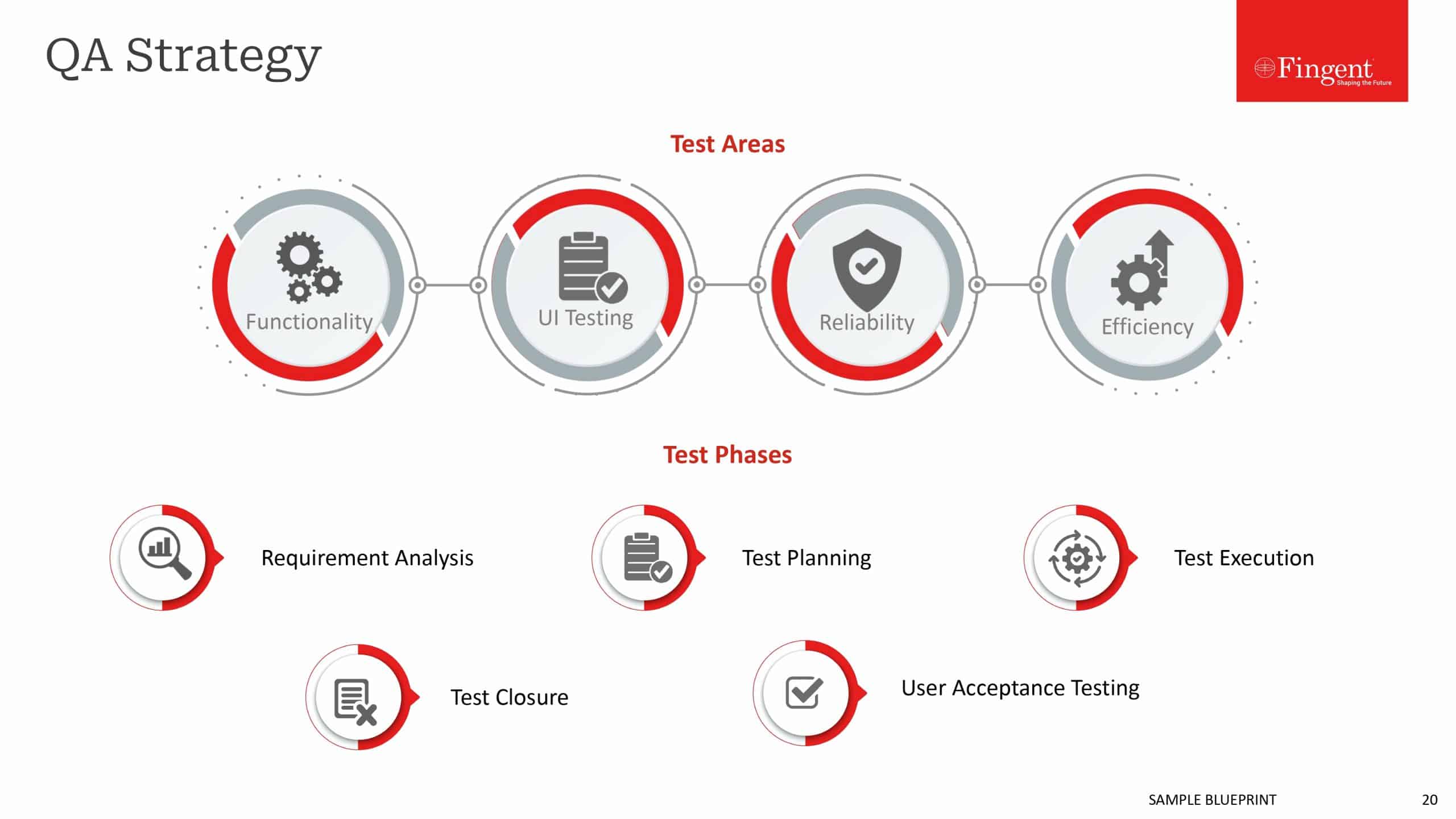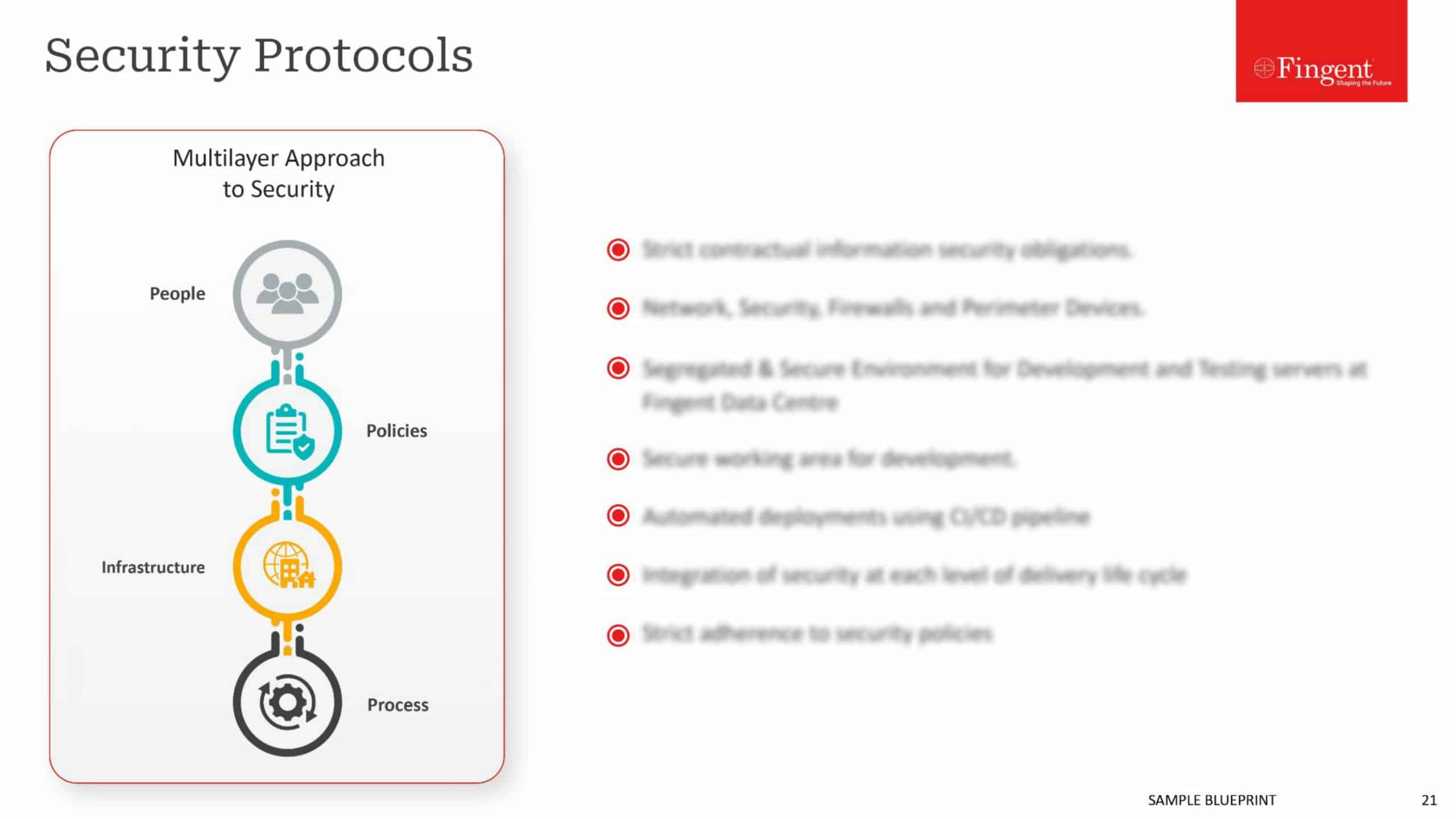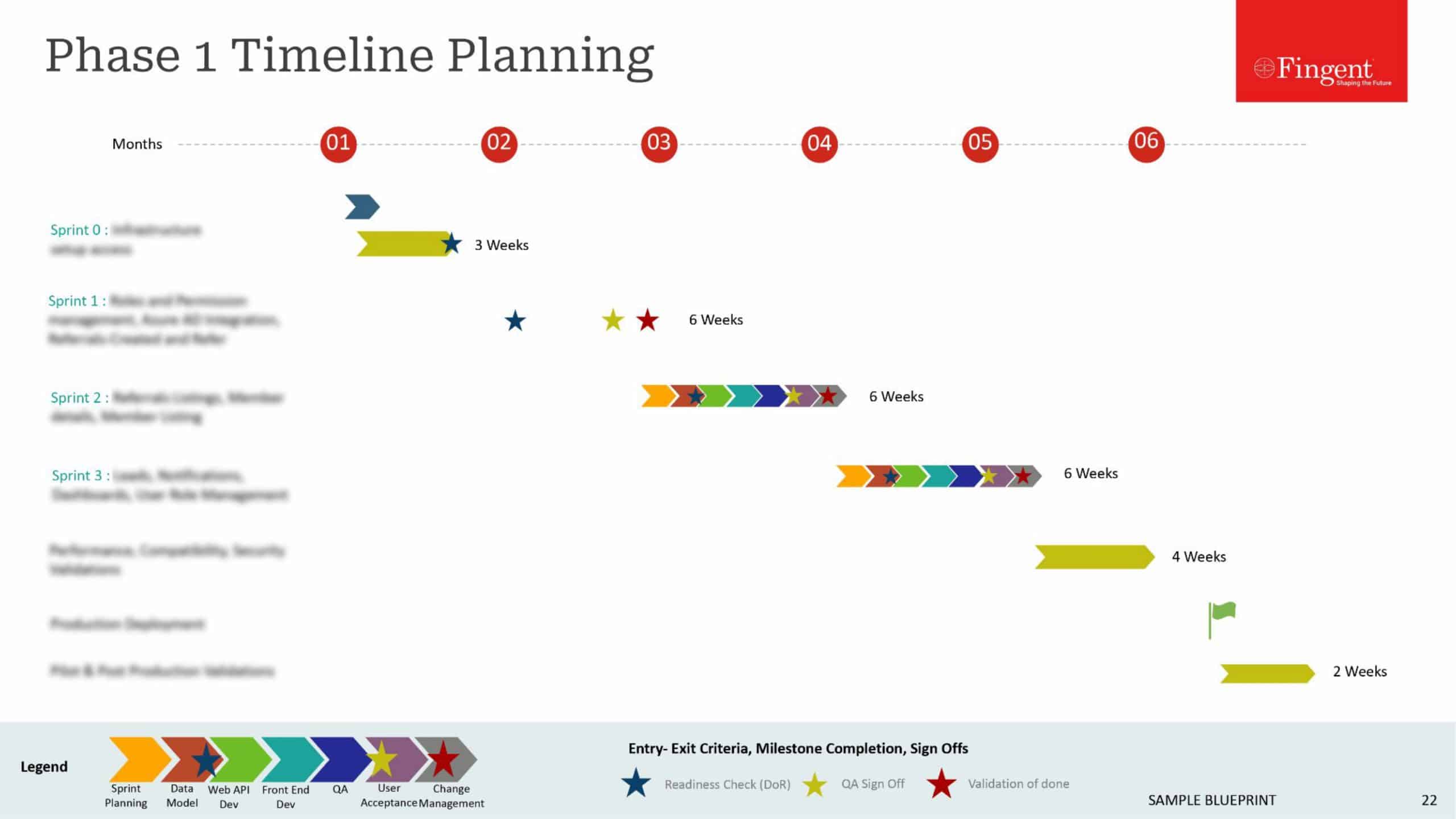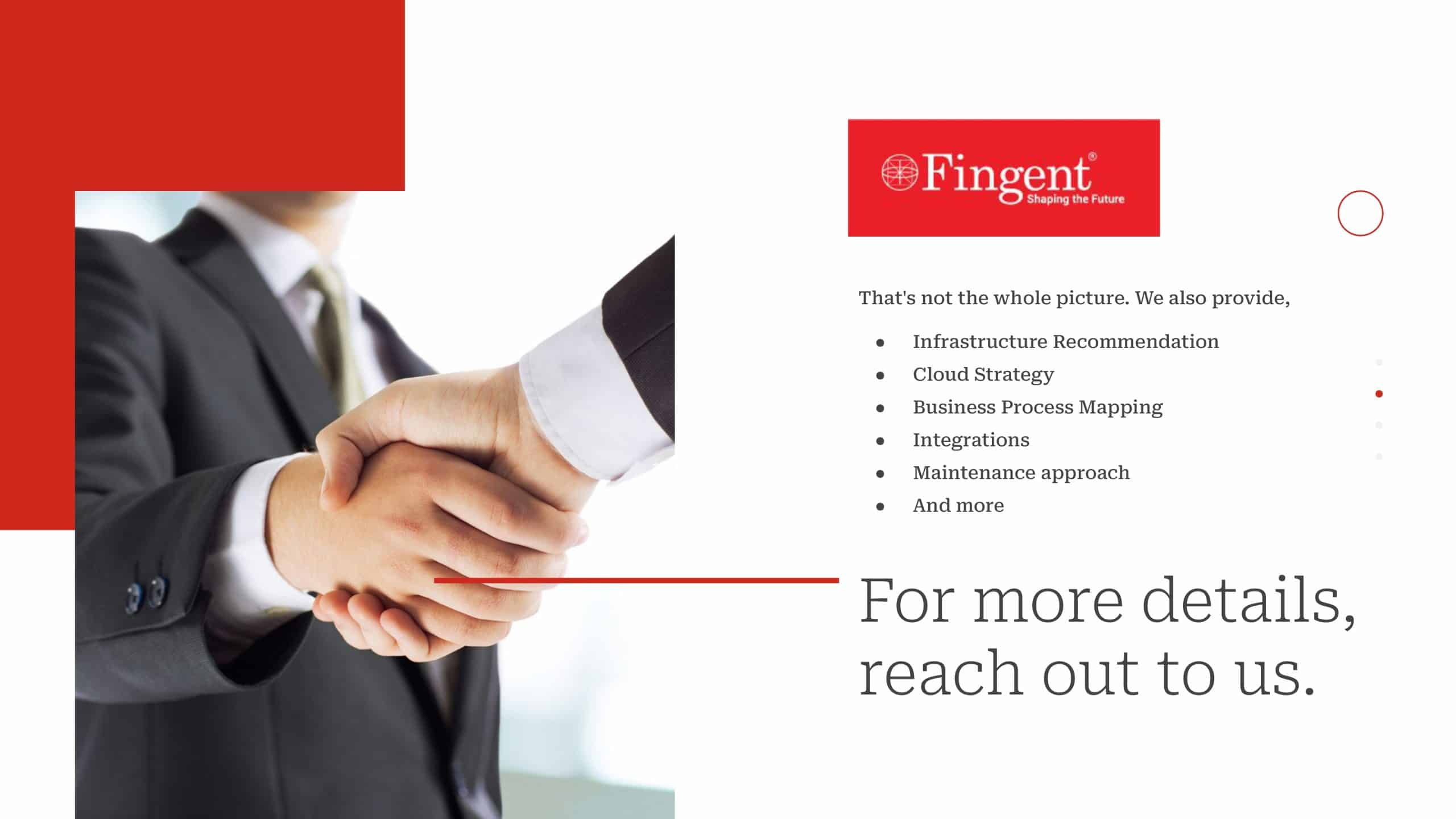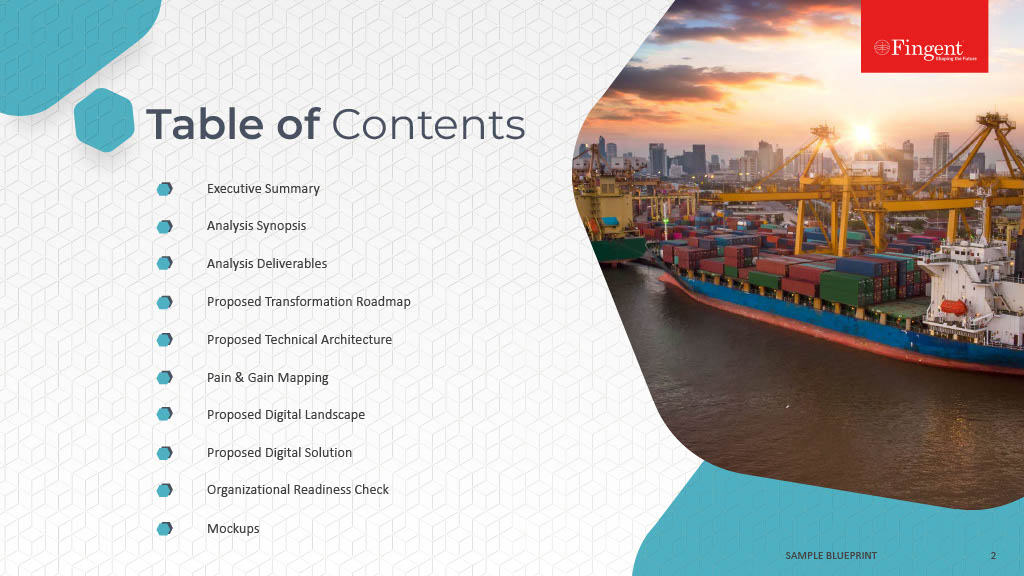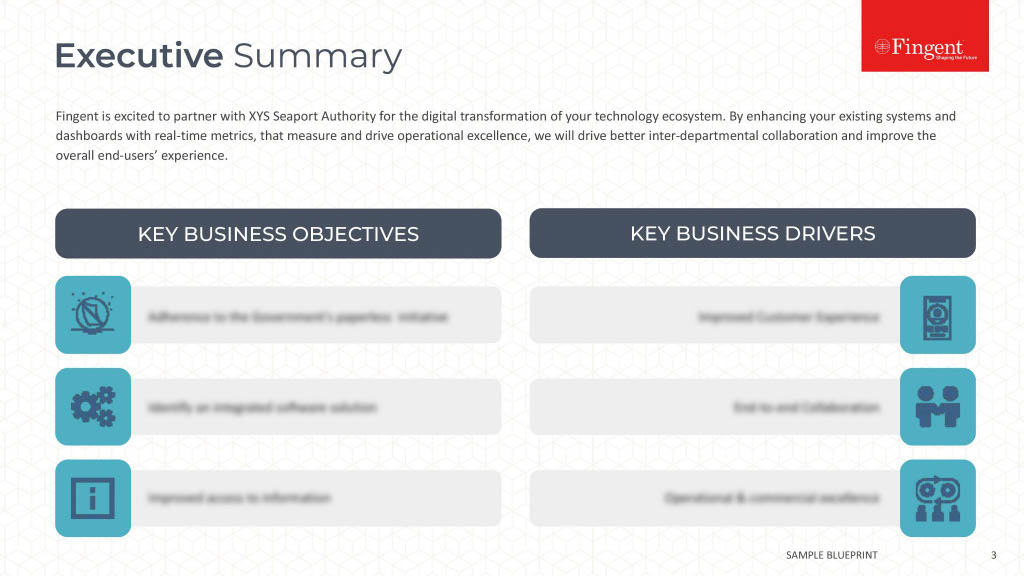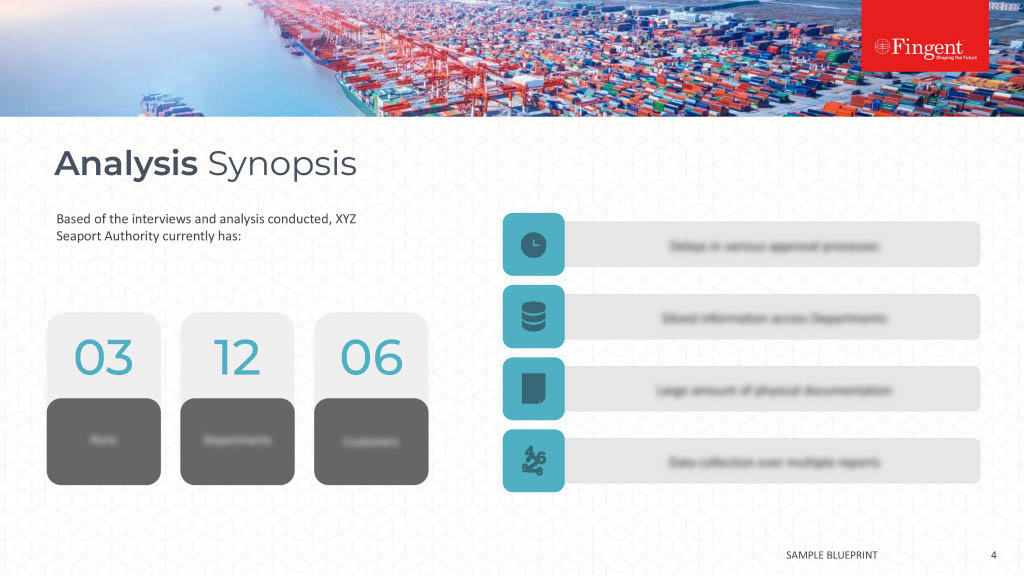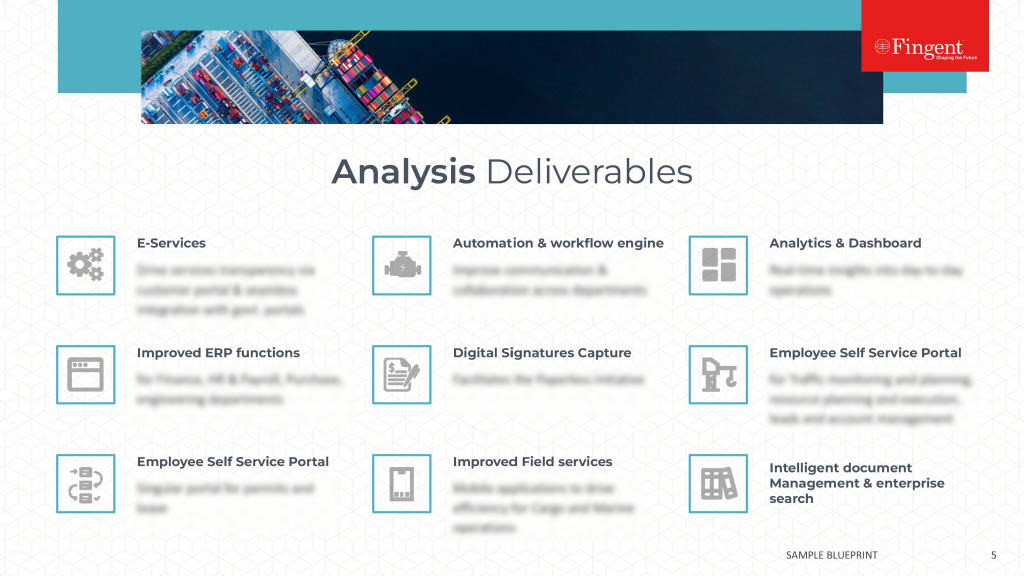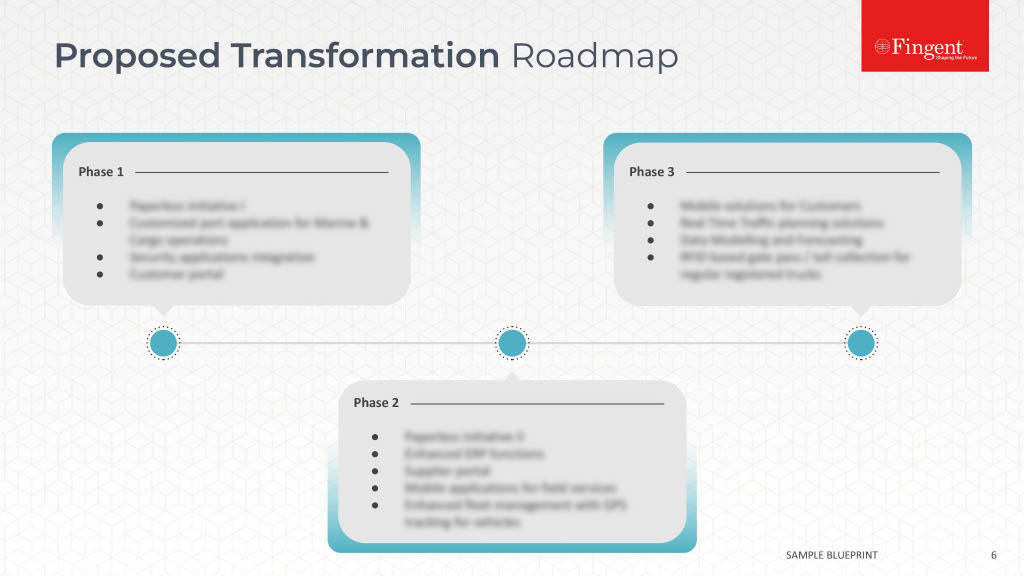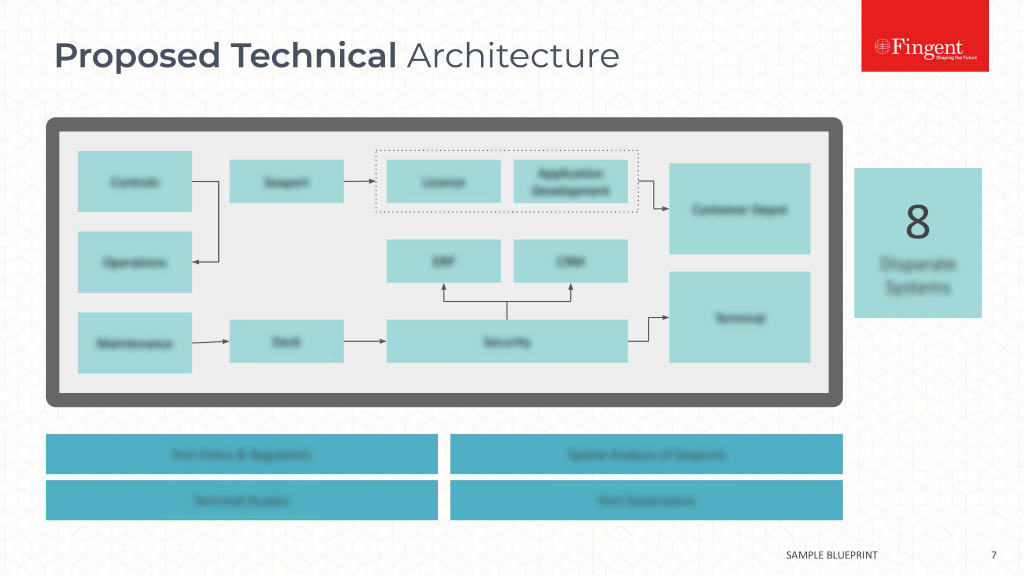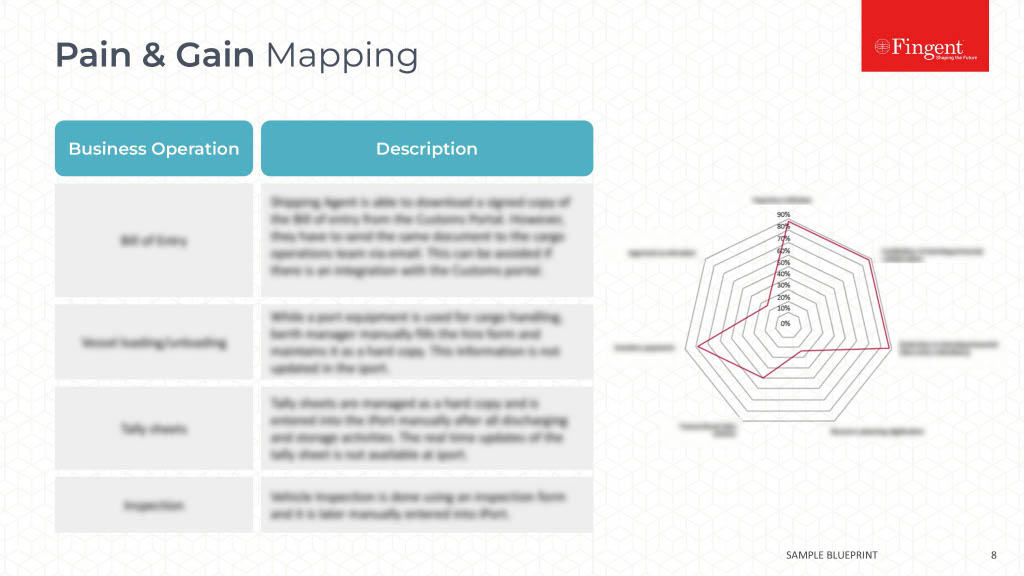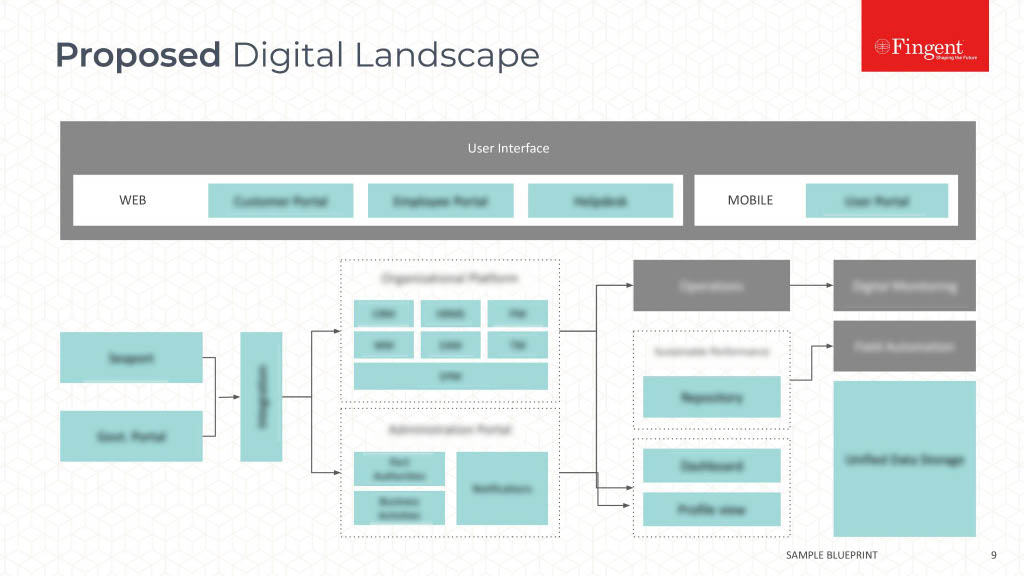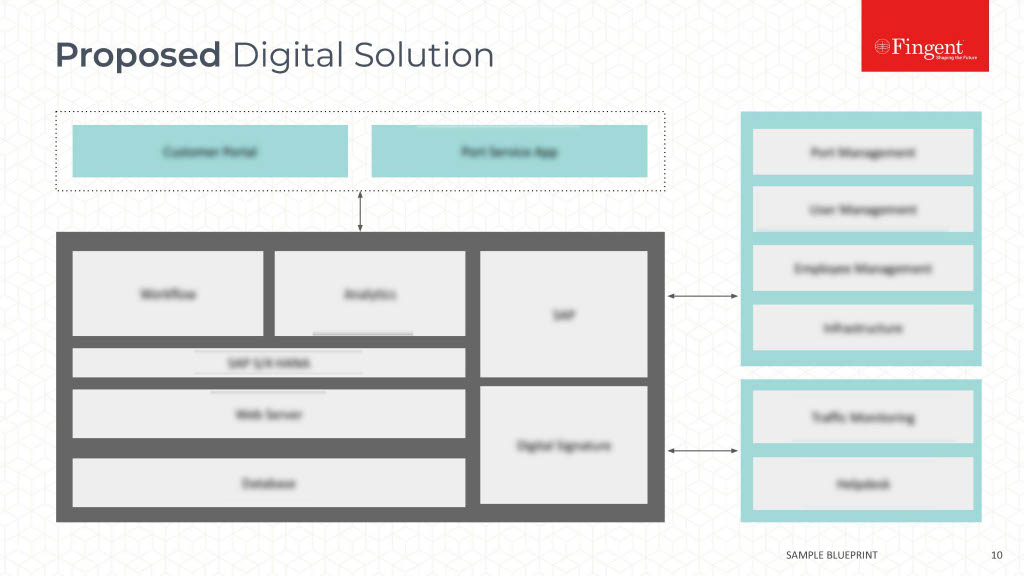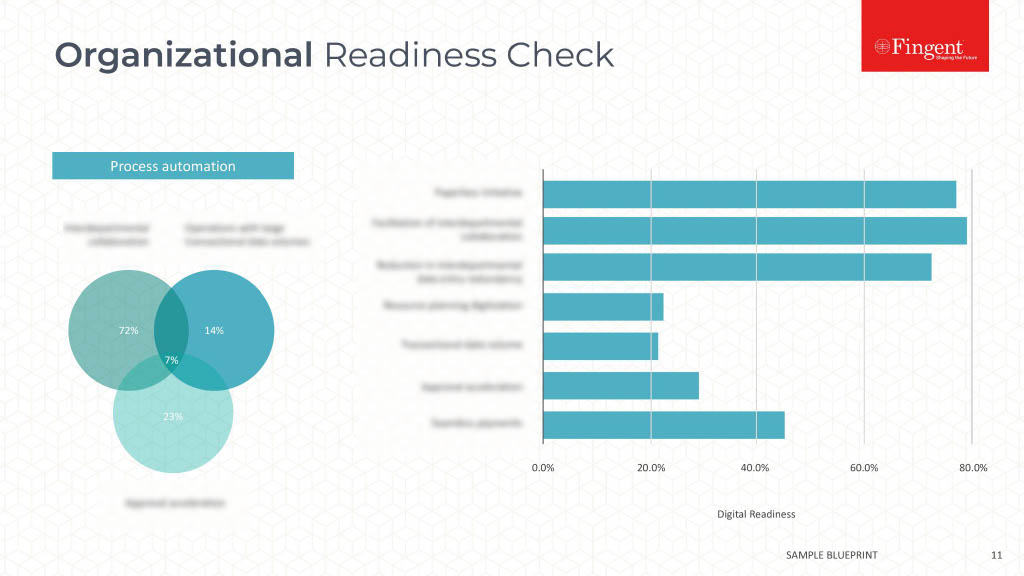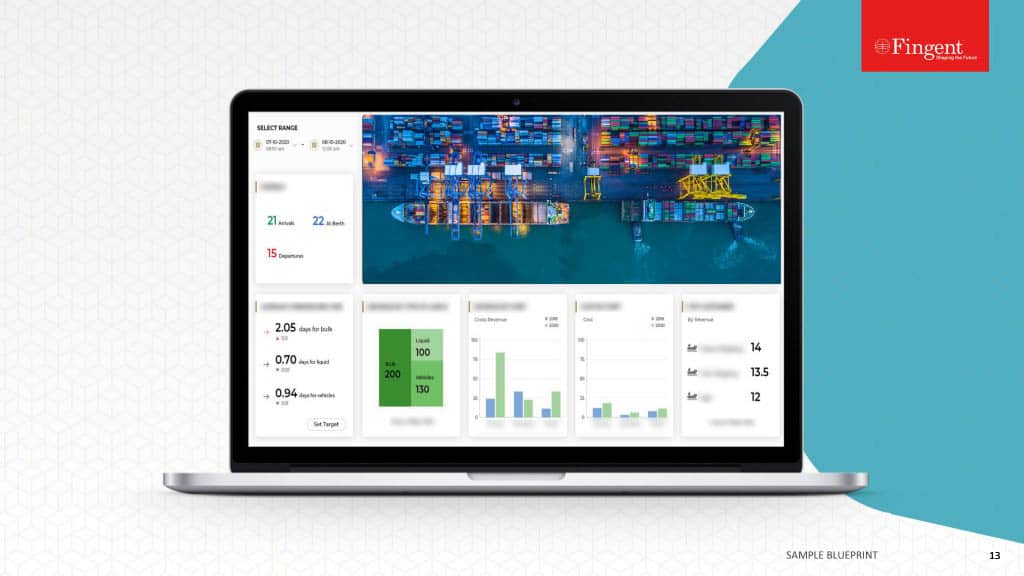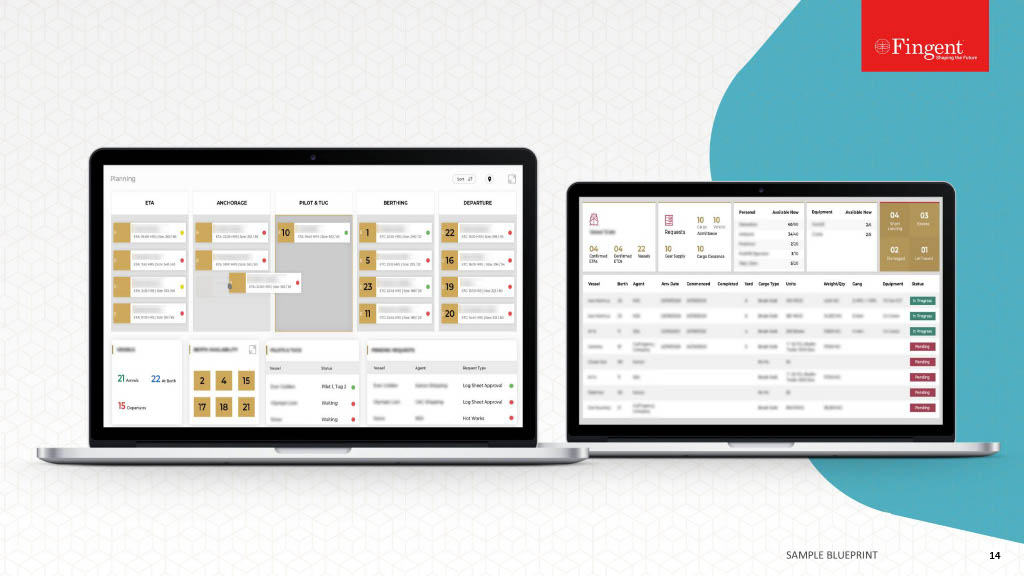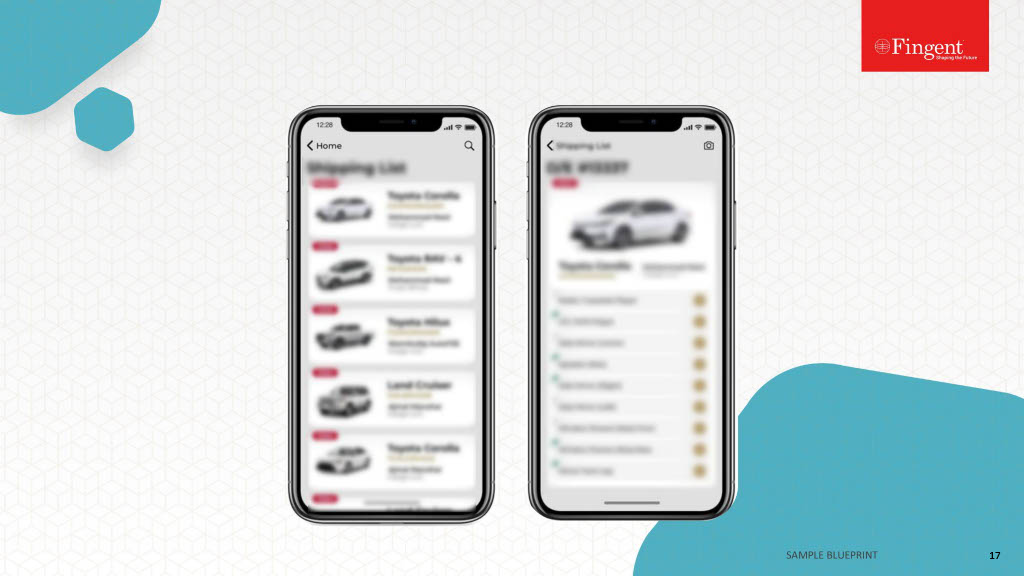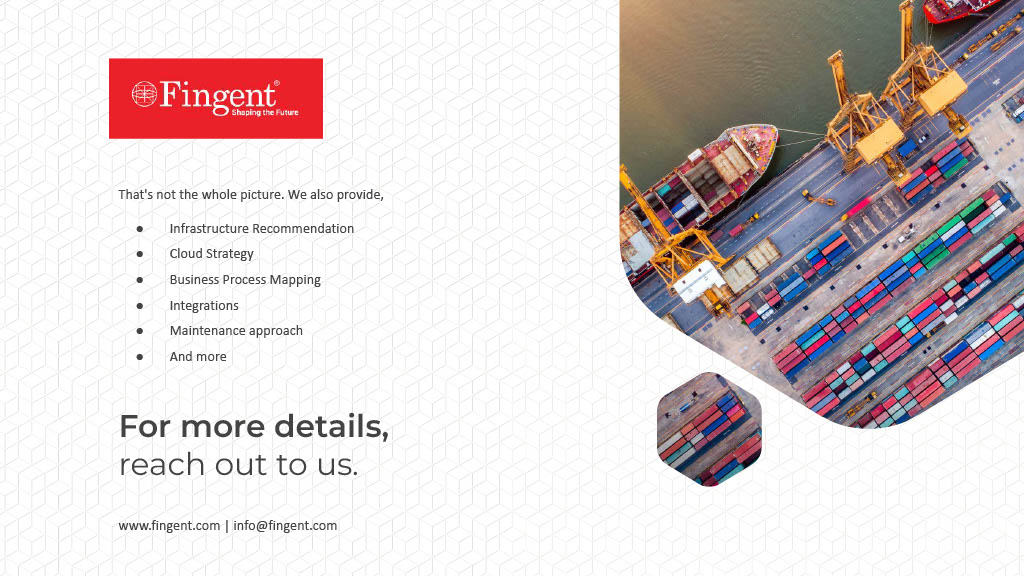Category: Technology
Why do retailers undertake operational improvement?
Enhancing operational excellence will improve customer satisfaction, reduce compliance cost and optimize procurement. Today, retailers are taking a closer look at different aspects of their operations to improve customer experience. Top-notch retailers implement new technologies and processes on a continual basis to boost operational excellence.
This infographic lists 8 ways to boost operational excellence in retail stores.
Whether you’re a retailer, an online seller, a consumer, or have plans to venture into e-commerce, this must-see infographic is tailored for you. It provides valuable insights into the digital retail landscape. Contact us top custom software development company to access this essential infographic and stay ahead in the online marketplace.
Stay up to date on what's new

Featured Blogs
Stay up to date on
what's new



Talk To Our Experts
We are living in an era of unprecedented changes.The industrial revolution brought in an entirely different range of new material good which improved people’s lives. Today, we are witnessing the next big revolution which is transforming the lives of millions better known as revolution 4.0 or popularly coined the Internet Revolution.
The e-commerce dilemma
The e-commerce Industry faces a bunch of problems like maintaining customer loyalty, unwanted product returns, price wars & the real competition with brick & mortar based businesses.
Let’s focus on one problem for now & understand how we could solve it properly. Customer loyalty is very core to many businesses, as they believe that their customer is their king. But, customer loyalty between e-retailer and customer is built on various factors like shopping experience on the mobile app/website, prompt delivery of goods and finally the real quality of goods as well.
When it comes to building customer loyalty, e-retailers don’t solve the basic problem i.e on-time customer support. Instead, e-retailers usually try to build customer loyalty by offering hefty discounts, unwanted promotional activities and at times with gamification.
Taking customer support offline
Customer support should be the first priority in any type of e-commerce business because at the end of the day your customers should remain happy. Any business can provide support to its customers based on the infrastructure and resources available. It can be done online & offline depending on the support requests received every day. Offline Support can be done simply by sharing a helpdesk/customer support number with your customers.
Few things to take care while setting up an offline support desk is as follows:-
-
24/7 availability
A 24-hour open hotline is an added advantage as well as a USP for e-commerce business, usually, customers tend to buy things from places which provide round the clock support. The hotline reaffirms the trust and raises the credibility of the customers online.
-
Special number
It is very easy for people to remember a special or fancy number. The key here is to have a number that resonates the brand value of the website as well. Moreover, with a special number, the brand positioning of your website gets a certain level of upliftment.
-
Open lines
Generally, customer support centers miserably fail to provide support to everyone who calls in. The call drop rates are very high for support centers which receive a high number of requests. It would be impossible to attend to each and every call so that customers need not wait for a long time and have enough support staff to take support requests.
-
Interactive Voice Response System
IVRS is an “easy to implement” the system for businesses who receive more than 150-200 calls/day. IVRS has many options which can be configured manually and the IVRS System can be integrated to the main Support Network of the business to make things easier for the customers as well as the support staff. Care should be taken about how perfectly the IVRS can be integrated into the existing system.
-
Customer support script
Customer support script which reflects the values & ethics of the business must be followed by the support staff and customer support managers should ensure that the script is being adapted promptly because they are the voice of the business and whatever they say has a direct impact on the reputation of the business. If the median age of users in your user base is more than the age of 40 years then offline support is the best, because that generation still believes in the power of telephone.
Taking customer support online
Online Support can be provided using many platforms which is readily available in the market. Conventionally, online support is done using support tickets & Live Chat, essentially a helpdesk software where support agents resolve or escalate the support request from the customers ensuring that every customer is given equal priority. Innovation in this space is always a plus provided it increases customer loyalty, retention and most importantly brings in value.
Few things to take care when providing Live Chat or Ticket Based Support is as follows:-
-
Proactive & quick response
Customer support executives must be trained to provide support proactively & ensure that the customer doesn’t have to wait for a long time to get the response.
-
Think of the customers as brand ambassadors
The sole reason a customer leaves a place of business is based on the way they are treated hence always think of customers as your brand ambassador.
-
Controlling the nerves
There would be moments when the customer might be on a rage and is berserk with different kind of provocative words. Responding to the customer with a cool head and best way out is to think ahead and provide a solution for the customer rather than respond aggressively to the moment. Always be prepared for such scenarios.
-
Staff training
Training the staff to use the helpdesk software is an added advantage it would reduce the fatigue in the initial days of support
-
Self-service
Maintaining resources online like a knowledge base, FAQ, forums, tutorials which to close to users and in doubt-generating places.
-
Measure, monitor and improve
It is often forgotten that support efficiency can be measured. Keeping KPIs and finding ways to constantly improve them would certainly add tremendous value to your business as well as the Happiness Index of the customers. Come what may, the ultimate goal of the customer executive should be to provide 100% customer satisfaction.Taking support online or offline completely depends on the nature of business & the value addition you wish to give your customers. And, it is important to keep a check on the additional expenditure incurred to keep the support infrastructure in place.
The era of chatbots is here
Powered by cutting-edge Artificial Intelligence & Machine Learning Algorithms presently there are many chatbot services available in the market which can be easily used by any e-retailers to give an immersive & intuitive support mechanism for the customers in almost any messaging platform.
Chatbots are a simple to setup and can be integrated into any website, with many services online chatbots are presently being used by many small-scale e-retailers to run their support system. The advantages of having chatbots are the control you get over the scripts and the knowledge base the chatbot has access to. Moreover, compared to real human, the cost required to maintain a chatbot support system is very less. Chatbot certainly is a lucrative option for entrepreneurs who wish to cut cost on the operational side but customer support without a human touch has its own limitations as well.
Major Takeaways from Having a Support System in Place:-
-
Retains customers
When your customers are happy, he would come with repeat orders often. The relationship you build with the customer would have a lifelong impact on the success of your business
-
Creates word of mouth
A good customer service certainly generates excellent word of mouth and there is nothing better than word of mouth to promote & market your business. If we look at the success of many e-commerce websites, we would find that word of mouth has played an exceptional part.
-
Profitability
When the service is good, word of mouth and references are also good. It is very certain that your business would acquire more customers at a fraction of a cost you were supposed to. The returns you earn would be certainly much more than the returns you get by using the conventional form of marketing to promote your business.
-
Motivation for you and your employees
When a customer praises your business, it also boosts your employee morale. Naturally, over a period of time, your confidence rises on your business and you now know that giving good customer service is the key to build confidence in your employees, who will be empowered enough to keep their customers happy.
-
Competitive Advantage
Last but not the least, your customer service and the manpower that you employ for service can become your competitive advantage. If your employees themselves are building relationships with customers, then they will not allow a competitor to enter or place toehold. Hence, your business becomes sustainable and competitive and difficult to beat.
Thus, as you can figure it out yourself now, an extraordinary support system is key to the success of your business and it not only impacts your customers it keeps your employees also on the run to grab a pie in the market. Grow your retail firm multifold by seeking our expert advice. The sooner you build a competitive advantage, the better it is for you and your business.
Stay up to date on what's new

Featured Blogs
Stay up to date on
what's new



Talk To Our Experts
The open source revolution is on. More and more enterprises are joining the open source bandwagon, to develop their internal and customer-facing apps. Free availability of source code, unbridled flexibility, gross reduction of app development time, resilience, and several other advantages prompt the move. But with great advantages come great risks as well.
The very nature of open source leaves the enterprise app development team with little control over the source and nature of their code. The odds are high that open source code may come with vulnerabilities, open for hackers to exploit.
Technological advances cut both ways. While technology may be used to beef up security, it also enables hackers to update their toolkits, and add any newly discovered vulnerability to their automated scanners. The odds of any application using flawed code being quickly found and exploited are generally high, more so when the open source library in question is a popular one. To make things worse, such hacker toolkits are freely available now.
So how do enterprise counter the hacker menace and ensure they can still reap the benefits of open source?
Be Very Careful of Downloads
With dozens of different open source libraries, tools, frameworks, and code snippets freely available over the Internet, there is a very good chance the variant chosen by the enterprise may have vulnerabilities. Even the hugely popular Ruby on Rails web application framework, with a very wide user community known for prompt updates, has been inflicted with several security vulnerabilities, placing 200,000-plus sites at risk of attacks that could lead to remote code execution.
Opt only for versions of open source libraries maintained by established consortium, dedicated to the cause of enhancing and maintaining the software. Such consortium would have a stake in the code. They would almost certainly be supported by grants from generous sponsors, enabling them to issue prompt patch updates, when a vulnerability is discovered.
Enterprises, for their part, need a clear policy on the usage of open source, loaded with:
- A white-list of trusted websites, from where the source libraries may be downloaded. The most reliable options are the websites recommended by Open Source Initiative.
- A list of security do-and-don’t, to prevent system admins and other users from downloading spurious open source software from dubious sources. Have a well-documented security policy, with clear guidelines on installation and maintenance of open source.
Prefer source code to binaries wherever possible. Most open source products are available either as source code or in package formats or binaries. Binaries offer a far greater level of risk, as there is no telling whether it has complied with the associated source code after all. The best practice is to download the source code directly, verify it against the provided MD5 checksums for integrity, and analyze the code for any latent vulnerabilities, before using it to develop apps.
Establish a System
A commercial closed sourced suite is developed through a structured and formal procedure, such as conducting a requirement analysis, defining the acceptance criteria, evaluating the product, comparing the product with competitive options, testing the functionality and security features, and more. Open source code may not necessarily undergo such kind of scrupulous evaluation or validation. There is no short cut but for the app development team to establish a method in the madness themselves.
Have a process in place to ensure adequate control, and to update all third-party code promptly.
Analyze the environment to identify possible threats. For instance, using popular open source libraries makes it that much convenient for attackers to identify vulnerabilities and launch attacks. However, at times, the biggest threat may not even be external, but malicious insiders. Understand the various ways in which the system could be attacked, and protect data accordingly.
Also, have a policy in place to govern code sources. Some teams may find they need to reduce the number of different code sources they use in order to manage them effectively. Within the framework of such policy and analysis:
- Create and maintain an up-to-date list of all third-party code in use, including all dependencies and sources. Designate a point person for each such code, to track mailing lists, news and updates.
- Avoid ad-hoc installations. Evaluate any open source considered for an enterprise use, and gather accurate information about the product.
- Institute an emergency response plan to execute critical releases. Internet facing apps often require a swift response to prevent attackers from exploiting a newly discovered vulnerability.
- Institute a dedicated team of system, network and security administrators to implement the policy and also review the policy from time to time, depending on the changes in business environment.
Apply Security Tools
Policies and safeguards can only safeguard to an extent, and require reinforcement through effective security tools.
Many open source projects do not issue patches, and rather just release a new version that fixes the problem.
The following are some of the tools worth considering:
Source code scanners such as FlawFinder and RATS (Rough Auditing Tool for Security) identify potential security problems in the source code. These source code scanners undertake pattern matching to highlight the areas of the code that has potential vulnerability and pose security risks such as buffer overflows, racing conditions, shell meta character dangers and poor random number acquisition.
- Vulnerability scanners such as SARA (Security Audit Research Assistant) and Nessus scan the network for vulnerabilities.
- Adopt a defense-in-Depth strategy, or a layered approach to securing the network, deploying the most effective security tool at all levels, from, application to the network.
- Configure the network properly. Disable all unwanted services, adopting the policy of “deny by default unless explicitly permitted.”
- Assume the network will be breached, and have effective measures in place to contain the menace, such as encryption of sensitive data.
The stakes of security breaches are high. The penalties, damaging lawsuits, and erosion of customer confidence can bring down the enterprise in itself. The most effective and risk-free approach towards adopting open-source is to partner with an experienced partner, like us. With us, you can leverage our considerable experience in not just developing cutting edge solutions using the most relevant open-source tools, but also take the most effective measures to ensure top-grade security.
Stay up to date on what's new

Featured Blogs
Stay up to date on
what's new



Talk To Our Experts
Few lines about Varghese Samuel -CEO of Fingent Corp
Mr. Samuel is the Founder and CEO at Fingent Corp, a Global Technology company founded in 2003. Samuel’s ability as a leader, to span a breadth of businesses and technologies has enabled Fingent to build and deploy technology platforms which realize tangible business benefits for Enterprise businesses across the globe.
Over the last couple of years, he has led Fingent’s transformation to the cloud-based services business – Products and services that Fingent currently offers leverage modern cloud platforms and frameworks. Samuel has been a Technologist and an Entrepreneur leading technology innovations over the last 20+ years. He has a diverse background in the broader financial services and healthcare industry, and a proven track record of transforming businesses by creating innovative technology solutions. Samuel received a Master’s Degree in Engineering from Indian Institute of Technology, Mumbai India.
1. Give us a brief introduction about your company.
Since our inception in 2003, Fingent has pioneered custom solutions that have become central components in our client’s business success. Our technology and industry expertise enables us to partner with clients to deliver sophisticated solutions rapidly and on budget. We apply modern design principles, together with the latest in mobile, cloud and desktop technologies to help create solutions. As an organization, our primary focus is to build technology solutions that help businesses simplify/streamline their existing business processes, prepare for future growth, offer new services, reduce operational overheads, lower costs and help organizations connect better.
Fingent has been a recognized force to reckon in the technology space as we have made significant investment in producing advanced software products and platforms that will transform the technology industry.
2. What are the services you offer to your clients?
Fingent has been building custom enterprise business applications since inception for major corporations, small/medium businesses and startups across the Globe. As a pioneer in delivering technology driven innovations, we have segmented our focus areas into 8 Strategic technology Business Units, to better respond to client requirements. Our Strategic Business Units are as follows
● Microsoft
● SAP
● Enterprise Mobility / Digital
● Open Source
● Dev Ops and Infrastructure management
● QA
● Product conceptualization, including UI/UX
● Data Analytics
Most of our clients prefer to opt-in for services spanning across BUs for a single program or for multiple projects. Key areas include:
● Technology consulting ( including strategy, review, and intervention)
● Software product development including PLM
● Business process automation
● Digital Marketing
3. In this intensely competitive era, what technologies, services, and project model can give you an edge over your competitors?
Our vision is to be acknowledged by our clients, people and our shareholders as the leading strategic technology partner in our market.
We will deliver this vision by providing high-quality Software & product development, IT infrastructure, project management & IT Consulting services enabled by our people, technology, and assets and supported by our committed vendors and partners.
4. After service is a necessary part of development. How do you provide customer support to your client?
We have always prided ourselves as our client’s extended technology wing. We have always focused on, not just building solutions, but, delivering value. And as extended partners of our client, we ensure that our solutions and products are always catalysts to their growth. We have account managers and business analysts who act as single point of contact for every client need. Our dedicated infrastructure and quality assurance team ensure that we deliver quality solutions that keep our clients a step ahead in the market.
5. Give your opinions on how far this app revolution can make a difference in the technology world?
We already have many personal-use apps exploiting the hyper-connected, hyper-local, hyper-personalized environments provided by mobile devices. Apps and the connected cloud-based ecosystems have dramatically transformed the personal-tech space.
However, the Enterprise Tech world has barely scratched the surface in exploiting apps for innovation and business value creation. While Enterprise users demand mass market like apps and their cloud counterparts, security and cultural challenges remain key obstacles. The challenge is to find the delicate balance between controlling mobile devices and yet freeing employees to use them efficiently. CTOs and CIOs managing Enterprise IT teams can leverage the app (and cloud) revolution to deliver significant value by:
- Placing mobility and mobile devices at the heart of their digital workplace strategies
- Deploy management policies while educating users and bringing transparency to compliance
- Provide the best Rewards versus Risks balance for the apps deployed across various employee segments
- Manage the device lifecycle – purchase, usage, and disposal
Enterprise mobility is complex. At Fingent, we can help traditional IT teams upgrade their Enterprise Mobility strategy to deliver tangible business value, by leveraging the app revolution.
6. What latest technologies and tools you’re planning to implement for mobile app development?
We prefer to use tried and tested robust technologies to create both native and cross-platform apps across – iOS, Android, Windows and Blackberry devices. We carefully evaluate new and bleeding edge tech before considering them for production use on client projects. While there are a number of tools we are evaluating, we are excited by the recently announced Azure App accelerator and Telerik Progress platform. Long term – we believe that AI and Machine learning will significantly alter the app development process. On a slightly different note, there is a lot happening on the wearables, AR and VR space. We successfully delivered our first Hololens project a couple of months ago.
7. What’s your approach to creating interactive and addictive UX/UI of mobile apps and websites?
We approach UX/UI from the perspectives of -Understandability, Learnability, and Operability under real user conditions. On mobile, we try to imbibe business features with the natural advantages provided by the mobile ecosystem – GPS and location tracking, Voice recognition, Cameras for Scanning, Gyro and Accelerometers, native connectivity option like Wifi and Bluetooth – in a secure manner. From a UI techniques perspective, we are looking at circular design patterns, interactive content layers, intelligent manipulation of content, cognitive interfaces and a few other areas to provide good learnability and operability.
8. What are the challenges you see in the outsourcing industry and how much you’re prepared to face those challenges?
I remember reading a report recently that 70% of CIOs expect to change their mix of sourcing providers to get more business value and innovation from new partner relationships. While this is a challenge for incumbents, it is good news for the outsourcing industry as a whole. For customers, outsourcing is no longer just about cost, but also about innovation and partnership. Today, most Enterprise software outsourcing is based on the staff augmentation approach. As customers demand result oriented and value driven partnerships, we see a slow but steady shift back towards the project-based approach. This requires a greater understanding of the customer’s business and higher accountability and ownership of business results.
At Fingent, we are built ground up to focus on the business outcomes that our clients wish to achieve using the product we develop for them. Our processes secure the continuity and coherence across the CX cycle from- Sales to Account Management to Operations and Delivery. This, together with our focus on technology competence development ensures that we provide innovative solutions to add value to our customers’ businesses. We are happier to provide our customers with solutions that add value to their business, to be accountable for the entire solution, than to body shop. We are ready.
9. Mention the ways you use to introduce new updates to your team.
We have many different mechanisms depending upon the source, the context, and the impact. Technology updates are managed within the BU and the teams unless it has a wide-ranging cross-functional impact. Project-specific updates are introduced from the PMO since every project has a single point of contact ( for the client) who is responsible to secure that project changes are communicated and understood by the project team. Communication channels for an update may include one or more of- meetings, emails, blogs or updates within our PM tool. We prefer face to face communication to the extent possible, either in person, or using modern video communication tools.
10. Nearly 70% users engage in wearable tech. What’s your step to enter into this revolution?
We have already started working with clients on Augmented Reality. We recently delivered a Hololens based facial recognition system for a client. We see opportunities across the entire technology stack- from chipsets to applications to cloud to data analytics and learning. Our strategy is a bimodal approach –
- Leverage competence in areas where we are already strong. For e.g. Our strengths in data analytics and visualization, help us manage the structured, semi-structured and unstructured data that flows in from wearables. Our expertise in data security helps provide Security consulting services to Wearable tech manufacturers.
- To focus on a few niche areas, where platform technologies are likely to succeed. For e.g. creating Augmented Reality applications for the HoloLens.
11. Examine the success and failures that your developers are facing while wearable app development?
The key challenges that we face in the wearable tech industry include:
- Lack of standardization. Fragmented platforms create an overhead due to the learning curve and lack of interoperability.
- Cultural challenges. Many users are not aware that by connecting wearables to the internet, high-risk information is placed in highly insecure and vulnerable environments. Risk assessments are often overlooked in an attempt to cut costs.
Nonetheless, we are optimistic about the opportunities here. These are challenges faced by any nascent industry.
12. There’s a boom in native apps for wearable devices, what’s your move to this technology?
Given the tight hardware integration required for many wearables, I would argue that in most cases, native is the only option. We are looking for more cross-platform tools to create apps that can be deployed across platforms at lower costs for our customers, But these are early days and we believe that such cost efficiencies will soon be created.
13. Define your future prospective and vision regarding new technologies like wearable and IoT apps?
I believe that we are at the beginning of the mass market wearable and IoT revolution. Privacy issues may lead to a temporary backlash, but these issues can be resolved.
We are looking forward to enterprise applications of wearable technology, especially in AR. Challenges around Security, Interoperability and Data mining/analysis have to be solved for Wearables and IoT to deliver tangible benefits at low risk.
14. What is your go-to-market scheme at a global level?
Currently, we are operating globally with offices across the globe. We have built many innovative solutions for our clients which are attracting other business with similar needs to reach out to us. We have a market research team that does industry research to identify the potential leads/opportunities based on the various matrix that we have developed internally. Some of the advanced project management and delivery processes that we developed with proven history convince our clients to work with us. We have most of our clients working with us for many years as a trusted partner as the organizational culture that we developed over the years focus on trust, integrity, and transparency with our clients along advanced technology capabilities.
We also share our knowledge and experience through blogs, white papers, case studies which has helped many people. We are also tapping into the power of social media platforms.
We also recognize that there is so much more than can be done to establish the Fingent Brand across the Globe.
Please tune in to hear about some major platform launches coming soon which we have been hard at work.
15. Mention the name of some of your successful projects?
We are grateful to have worked with large enterprises like NEC, Johnson and Johnson, CBN, Sony, WRI Capital, PwC and many more. We take a great deal of pride in having played a significant part in the explosive growth of successful startups like RentMoji, MFS, Lindsey Jones, Sweden Academy, Teachucator and many others. We believe that true success is about adding value to people’s lives, be it in ways large or small, at work or at home – our work with our clients has helped us do exactly that.
This post originally appeared at https://www.itfirms.co/interview-with-varghese-samuel-ceo-fingent-corp/
Stay up to date on what's new

Featured Blogs
Stay up to date on
what's new



Talk To Our Experts
Improving the customer experience is the mantra for survival in today’s highly competitive business environment. More and more businesses have identified machine learning as a reliable tool towards this end.
Machine learning is in essence software coded differently to traditional software. Rather than a long list of if-then-else statements typical of traditional software, machine learning predicts what humans would do given a specific set of inputs.
Currently, marketers and others leverage machine learning to further customer experience through improved personalization, enhancing the computer vision, improving natural language, greater decision support, through analytics optimization, and augmented analytics.
1. Machine Learning Aids Personalisation
Today’s highly pampered customers prefer and even demand personalized engagement and experiences. Machine Learning facilitates it to the hilt. Data and analytics allow marketers to understand customer preferences. Using machine learning in combination with new data sources from the Internet of Things (IoT,) telematics, geolocation beacons, and social data improve the insights.
Several marketers now apply machine learning based algorithms to understand the nuances of their customer’s preferences and engage them on their terms. Marketers use such algorithms to develop highly relevant marketing campaigns, such as a matching audience profile with highly targeted video content. These steps improve the call-to-action.
Customers receive tailored offers rather than irrelevant non-contextual offers. Such non-contextualized offers have a very low probability of conversion.
Segmentation gets better. For instance, insurance companies do not have to go by general assumptions or time-honored conventions to offer the highest automobile insurance premiums to a 16-to-25-year-old male. They can factor in everything specifically related to the customer, and tailor the premium based on individual rather than class factors.
The creation of such relevant content is the godsend at a time when over 90% of online users in the U.S. and Europe feels advertising is more intrusive today compared to two years ago.
Related Infographic: Machine Learning- Deciphering the most Disruptive Innovation
2. Machine Learning Facilitates Computer Vision
Machine Learning technology detects everything and anything, from objects and people to complex scenes within the images and videos. Applying the technology to enhance the quality of digital assets is a sure-shot way to win the customer’s heart.
One big success story is Twitter’s Magic Pony, which leverages machine learning technology to make pixelated images sharper, and enhances the quality of video captured on mobile phones in poor lighting conditions. Apart from delighting the customer, the spin-off benefit of Twitter is lower data usage, and by extension improved streaming abilities.
3. Machine Learning Aids Natural Language Processing
The next big thing revolutionizing human interactions with computers is speech recognition technology. The ability of computers to recognize human speech and act on it not only spares the hassles of keyboard typing but also unlocks a host of new possibilities. While speech recognition technology has been around for a while, the application of advanced machine learning technologies has made the system highly accurate, with error rates far lower than humans. Google’s Cloud Speech API now recognizes over 80 languages and variants, with a high level of accuracy.
Marketers can, and are leveraging advanced linguistic data and cognitive technologies spawned by speech recognition capabilities to create highly engaging content, targeted at the customer. In a sense, it furthers the cause of personalization in a big way.
Marketers benefit from natural language capabilities in myriad other ways also. A case in point is the intuitive new tool launched by Relative Insight, a UK based start-up. The tool converts natural language into data, offering marketers a wealth of information to connect with specific audiences instantly and deeply.
4. Machine Learning Improves Decision Support
Machine learning allows the marketers to predict the future. The “machine” becomes capable enough to predict the customer’s likely course of action, based on the data at his disposal, and his present behavior. The market is now flooded with several digital tools and services which provide advanced recommendations on this front.
On the anvil is “copyless paste,” where machine learning will save users time by proactively offering to share information between apps. Marketers will leverage the concept further to offer proactive product suggestions. Integration with other systems also offers the scope for proactive and automatic delivery.
5. Machine Learning Facilitates Analytical Optimization
Businesses leverage the immense analytics opportunities offered by machine data to fine-tune their operations, deliver new business models, and offer new products and services in tune with customer demand. The insights gained, predict not just how a customer may behave or act, but also how the competition may move in the future.
One sector where machine learning algorithms are already in widespread use is the financial sector. Financial services companies use various machine learning algorithms such as random forest and gradient boosted models for a host of applications, from predicting the probability of being ranked at the top of aggregator portals to predict midterm cancellation rates on policies, and more. These applications have a direct bearing on customer satisfaction. For example, banks and financial institutions predict volumes for credit card lines, to adjust rates and terms, and thereby attract the right type and volume of customers for the specific product.
Related Reading: Top Artificial Intelligence Trends to Watch Out for In 2019
6. Machine Learning Facilitates Augmented Analytics
The scope of machine learning improves with the development of technology. Neural networks support better classification and forecasting, decision trees support more complex rule and relationship-based customer experience programs. All these improve the organization’s ability to support complex decisions, forecasts, and optimizations.
Augmented analytics, which co-opts these latest and emerging technologies, combines various elements of the ecosystem, such as data preparation, business intelligence, predictive analytics and machine learning capabilities into a single, automatic and seamless process. Enterprises would be able to cleanse their data easily, to uncover latent insights and patterns.
Today’s huge data create millions of variable combinations impossible to process manually or even with traditional tools. Augmented analytics, powered by machine learning, deliver quicker insights, reducing customer frustration.
What exists now is just the tip of the iceberg. The future holds a world of possibilities. A case in point is the fragmented nature of the machine learning ecosystem being all set for a big churn. Increased competition, the hyper-fast paced changes in technology, and the proliferation of big data at an alarming frequency force many open source machine learning libraries, algorithms and frameworks to join forces and deliver a better deal to their customers. The lower-level personalization commonplace today will make way for a more robust collaborative filtering, delivering a much higher degree of personalization and contextualization than present levels.
Side-by-side, the machine learning ecosystem is becoming increasingly easier to use, and more affordable. Hitherto, only enterprises with large analytics teams could really afford to play around with machine learning. The advent of various solutions delivered in a cloud-based subscription model makes the power of machine learning available to the masses, including start-ups, freelancers, and even individuals.
Marketers and brands can leverage the improved ecosystem to generate a better picture of their customers’ true context, and serve them better. Simply put, customers will get better food, movie, music, travel, product and purchase recommendations.
Related Reading: AI To Solve Today’s Retail Profit Problems
Stay up to date on what's new

Featured Blogs
Stay up to date on
what's new



Talk To Our Experts
Artificial Intelligence (AI) is the simulation of human intelligence processes with the aid of machines. These machines primarily include computer systems and tools that carry out learning, problem-solving, reasoning and perception.
Customer service is one area where AI tools and technology can be used efficiently. As per a recent study, it is estimated that nearly 85% of the customer interactions will be handled without the presence of a human agent in next three years. There are approximately 38% of the enterprises that are using AI and the number will grow to 62% by the end of 2018. AI has the capability to accomplish the following set of tasks and activities in customer service and interactions.
Pre-emptive Action
AI embedded monitors can provide the customer service team with the ability to analyze the primary customer issues. The systems can offer real-time support to the customer for the resolution of such issues. The huge clusters of web applications can be gathered and studied to resolve the issues even before their occurrence. This empowers the business organizations to reduce the customer abandonment rates and enhance the level of customer engagement.
Messaging Applications
The use of messaging applications is not restricted to connecting with friends, family, and colleagues. The brands are using these applications for customer interaction and the usage is set to increase further. The use of social media applications and in-house messaging applications allows real-time interaction with the customers and thus resolve their queries and issues.
One-time Training
The expenditure on hiring the customer service agent and training the member is quite high. It is also necessary to organize training sessions at regular intervals. However, with the use of AI platforms, a one-time training is sufficient which in turn would bring down the costs to a huge margin.
Related Webinar : Artificial Intelligence in layman’s termsNon-stop Services
Customer service agents cannot be made available for a non-stop period of time. The human resources work for specific hours in a day and may remain unavailable at the time of an incident. These limitations can be resolved by the use of automated support and customer service tools which interact with the customers at any hour of the day. The queries and incidents reported by the customers are automatically recorded and a suitable response is also provided that matches the reported query.
Self-service Options
A recent customer service study revealed that over 72% customers do not prefer phone calls for the resolution of their query or issue. Self-service options for customer service are on a rise and the use of chat-bots and forums have rapidly increased. AI has enabled the easy development and usage of such options. The companies that are still not utilizing such platforms will be required to incorporate the same in the future for enhanced customer relationship management and service.
Reliability & Scalability
Customer service and interaction have a great role to play in customer engagement and relationship management. According to a survey, 42% of the customers increased their purchase after a good customer service response. On the other hand, 52% customers reduced their engagement with the organization after a poor experience. AI platforms can enhance the reliability of service with their non-stop availability and unbiased customer interaction. The AI tools can also be scaled up or down as per the requirements. These applications can simultaneously handle a wide number of customers without any impact on the speed and performance.
Cost-Savings
There are advanced customer services that can be provided by artificial intelligence. The use of automated applications can reduce the costs. Resource and training costs along with the cost of the infrastructure are eliminated with the incorporation of AI tools.
It is often assumed that Artificial Intelligence will replace the jobs currently being handled by the human resources. There are over 10 million jobs that will be replaced by AI tools and applications in next ten years. However, in the case of customer service, automated assistance can only resolve 10-35% of the customer queries. Human assistance and capabilities will be required in the rest of the cases. The business organizations must research the AI applications and platforms that can be incorporated into their customer service interactions.
Stay up to date on what's new

Featured Blogs
Stay up to date on
what's new



Talk To Our Experts
The future expects to witness the e-commerce revenues to go up to $460+ billion. With the expansion of e-commerce in the recent years, it is also expected that there will be more competition in the e-commerce market. As per the recent survey, it has been found out that 67% of the millennials and 56% of Gen Xers prefer online shopping rather than in-store shopping. There are specific trends that have been observed with respect to e-commerce in the upcoming year.
Omni-Platform & Omni-Device
With the advent and expansion of Internet of Things (IoT), the consumers are making a shift towards integrated platforms and devices. The e-commerce applications will also be required to integrate to deal with the competition in future. Currently, around 85% of the online shoppers begin with their shopping on one device/platform and end it on a different device.
Faster Delivery
With the increase in online sales and competition, the brands can gain a competitive edge with faster shipments and deliveries. The e-commerce companies will be required to look out for more fulfillment options in the coming days with enhanced shipping cut-off times.
Use of Augmented Reality
Technology is witnessing modifications and advancements at a rapid rate. The use of Augmented Reality (AR) is the next big thing that will have an impact on the e-commerce industry as well. There are applications, such as Snapchat that have already started with the use of AR in their services. The e-commerce applications are sure to search for the measures to integrate their functionalities with AR.
Video Content
It is estimated that video will comprise of 80% of all online consumer Internet traffic by the end of 2020. Videos have the power to increase the purchase intent by 97% and can also boost the click-through rates by another 200-300%. The use of live videos will be in-trend to improve customer engagement.
Voice Search & Purchases
There are approximately 40% of the millennials that have used voice search to make a purchase. This number will further increase in the next few years. The e-commerce applications will be required to make their content compatible with the common user queries and terms used for purchasing.
In addition to this, the analysis is also carried out to understand these trends on the basis of different factors and parameters.
Trends by Gender
It has been recorded that both men and women spend five hours per week on online shopping with the percentage of men shoppers higher by 28%. The marketplaces have managed to attract 56% of women and 52% of male shoppers while the percentage is almost equal in case of large retailer sites with 75% men and 74% women shoppers. 40% women have used category specific online stores while the percentage in this section is 31% for men.
Trends by Parental Status
Online shopping engages parents for 7 hours per week while the duration is 4 hours for non-parents. There is also a difference in the budget for parents and non-parents as it has been recorded 40% and 34% respectively. 49% parents have stated that they cannot imagine their world without online shopping.
Trends by City-size
The percentage and budget allocated to online shopping are in the decreasing order in large/mid-size metropolitan areas, suburban areas and rural areas. Americans have scored the top rank in the expenditure made on online shopping. 63% of suburban shoppers do not prefer to pay shipping costs and online privacy is the major cause of concern for 38% of rural shoppers.
Trends by Types of Online Goods
Large retailers have succeeded in engaging 60% of the online shoppers for the purchase of clothing, shoes, and accessories. Shoppers prefer to stick to the marketplaces for the purchase of computer or electronic goods as the percentage recorded in this area is 43%. Marketplaces have also managed to attract 55% of the shoppers for the purchase of books, movies, and music. 28% category-specific online stores have been used for the purchase of flowers and goods.
Social media has played an influential and significant role in the purchasing trends of buyers. Market analysts can use the data from social media platforms to predict customer preferences and choices for the year to gain and maintain a competitive advantage.
Stay up to date on what's new

Featured Blogs
Stay up to date on
what's new



Talk To Our Experts
Learning is highly evolving in all facets of life and so are the systems that provide learning opportunities. The definite way to address the changing and growing requirements of employees in the organization is to provide them a responsive Learning Management System that will offer the right flexibility and accessibility of the learning material on multiple devices without loss of information or tracking. The continuous learning keeps them involved, motivated and helps to retain the employees in the organization. However, before your organization jumps into implementing a responsive LMS, it is important to put some crucial forethought for selecting the right one that suits the preference of your employees.
Understanding devices
You will need to understand and evaluate the various devices that are available and will be used most frequently as a learning source for your employees.There are numerous devices available today with various screen sizes. Pre-identifying these target devices helps in understanding the compatibility of the software and achieving better productivity. Lock the primary ones that you need to address and check if the responsive LMS works well, and adapts from landscape to portrait mode and back. Also, the user information should be tracked effortlessly so that the data isn’t lost when they switch between devices.
Easy Navigation
A responsive LMS should utilize the features that each device offers, such as touch, swipe, and scroll in smartphones. A highly intuitive UI with user-friendly approach will definitely make the learning experience more fun and enjoyable. Along with switching of the device resolution and screens, the content should also be formatted to mold into any device dimensions and screen resolutions.
Better Accessibility
Data packs that connect to the internet vary largely on devices and hence you need to consider your content likewise. Choose an LMS system that utilizes HTML5 that helps learners to download and access the learning material offline. Also, keep the bandwidth that each lesson will need in mind and use a cloud-based system that customizes the resolution and bandwidth as per usage.
Safe and Secure
No matter how good a responsive LMS system is, if it doesn’t offer security to user’s information, it simply won’t work. Select an LMS system that can protect and safeguard the personal data of learners. This may include securing email IDs, passwords, phone numbers, and even course content. This can be identified by checking what level of encrypted coding is used by the system and how secure is its server or cloud data storage.
User Interactivity
Responsive LMS system that allows the user to not just access material, but also lets them upload content in the form of pictures, videos, and more will definitely work well. It should have the ability to convert the content into a compatible format that will be streamlined and functional for all device types. Another feature that can enhance a responsive LMS is the addition of social elements. It is a great strategy to make the learners in the organization interact with each other with the help of discussion forums, chat plugins, ratings, and content sharing. It will not only help learners explore more but also help promote the material via their word of mouth.
Support Services
A more engaging and responsive LMS would always require monitoring and support over a static system. Check if you get the right support from the vendor and figure out their turnaround time. If your organization is huge, check if they can offer a dedicated support team on a contract.
A responsive LMS is a sure-shot way to go ahead if all these factors are kept in mind. If you are reading this to seek a vendor, contact us to learn more about the latest trends and practices in developing learning management systems and how these benefit learners and organizations today.
Stay up to date on what's new

Featured Blogs
Stay up to date on
what's new



Talk To Our Experts
If you are planning to select Business Intelligence (BI) tool for your Big Data solutions, it is important to evaluate which one is the best suited and not best rated for your company. Selecting a right visualization tool that can help you get the most out of Big Data and has well-defined functions, is an important criterion of the process. So you should ask the following questions before selecting the best tool for your company.
1. What are you visualizing?
It is important to first understand why you are looking for the tool in the first place. If you are planning to visualize the internal data such as marketing, finance, etc. you should look for a tool that is in alignment with your management system. For example, if you are using SAP ECC/Net Weaver system for handling internal data, an SAP-based BI will work better for easy implementation and cost reduction on training. Similarly, if you are going to use the tool for a client, it is better to use something that is compatible with what your client is using.
2. How is the tool’s interface?
It is imperative that the tool has an easy to use Graphical User Interface (GUI). Tools are meant to save time and make the task easy. A well-designed tool that offers access to various options can be put in the pipeline with ease. Check if it has nice graphics capabilities in case you need to visualize decision trees and so on.
3. Does it have the essential support for visual discovery?
Tools should provide the most basic support for visual discovery and query processing. This might include something as simple as comma-separated values file, text, Excel, and XML support. Apart from these basic things, you might need to check what programming language it supports. Your decision will rest on what your internal team is expert at handling. Your team can get to support for various well-known programming languages such as C++, Python, Java, and Perl.
The other thing to check is whether or not the visualization tool you are planning to use is compatible with the operating system you use. In case of cloud implementation, ask the cloud provider for an OS that is compatible with your visualization tool. If you are catering to a client, ensure that the OS you select is compatible with their systems too.
4. Is the price right?
It is no surprise that price plays an important role in finalizing a lot of things in any company. BI projects cost a lot and the cost will largely depend on a number of criteria such as the level of in-house expertise and the ultimate goal to be achieved. Visualization tools should not be judged on the basis of their price alone but compared with how big is the need and what is being provided.
A good way to make a decision is to try a free trial version of the software to check whether it works for you or not. The tool provider should offer good technical support along with the documentation that covers all aspects of the tool.
5. How flexible is the tool?
Big Data is evolving at a phenomenal rate and so is the technology around it. Make sure that the visualization tool that you are seeking is flexible enough to adapt to these changes. Ask the provider how easy it is to upgrade the tool so that you do not hit a roadblock and require a complete overhaul in the near future.
Understanding these points will help you start zeroing on a list of visualization tools but seeking the support of an experienced tool provider will help you finalize it. Look for someone like us who have an expertise in understanding the requirements of the client and providing a complete solution.
Stay up to date on what's new

Featured Blogs
Stay up to date on
what's new



Talk To Our Experts
If your company is dealing with Big Data, Data analytics and visualization is a must-have tool to understand and gain insights effectively. There are several tools available in this sector that promise to convert raw data and produce it as solutions that are easily understandable. These solutions can be in the form of charts, videos, infographics or even highly engaging and intuitive presentation that uses Virtual Reality and Augmented Reality (VR & AR). Here are the top 7 data analytics and visualization tools that you can hire to get the most out of your data.
1. Tableau
Tableau is one of the most widely used data visualization software due to its user-friendly, intuitive design, and excellent official supporting documentation. This data analytics and visualization tool are available in five different versions – Desktop, Server, Online, Mobile, and free-to-use Tableau Public. It has the capacity to produce interactive visualizations that are compatible with huge and very fast-changing data sets used in Big Data operations involving artificial intelligence and machine learning applications. It is designed to work great with almost all advanced database solutions such as Hadoop, Amazon AWS, My SQL, SAP, and Teradata.
2. Sisense
This tool is smartly designed to provide a full stack analytics platform with ease of use. The interface offers users a chance to simply drag and drop charts and more complex graphics for achieving interactive visualizations without much of a hassle. The tool has the capability to gather data from multiple sources and query them instantaneously along with an option to share the dashboard across organizations. Sisense is a powerful tool for people who are experienced in this field and can be a little overwhelming for newcomers.
3. Plotly
Plotly is a web-based data visualization platform that lets the user create simple to complex charts directly inside their web browser. It offers a clean, intuitive and fully-featured interface for free, but its commercial package provides more user-friendliness and support. Its ability to enable more complex and sophisticated visualization is a direct result of integration with analytics related programming languages such as R, Python, and Matlab.
4. FusionCharts
This Javascript-based data analytics and visualization tool has the ability to produce 90 different chart types and integrates a large number of platforms and frameworks to offer optimum flexibility. It is one of the leaders in the paid-for market simply because it offers many live templates where users can simply plug in their data instead of starting one from scratch.
5. Google Charts
Google is at the forefront of technology and it stays the course by providing an entire set of data visualization tools that support various data formats including geolocation and offers a variety of outputs. But keep in mind that Google Charts are for people who have worked with data before and can code in JavaScript to make the best use of this amazing tool.
6. QlikView
QlikView tool is a major vendor that competes for supremacy with Tableau since it also provides a wide feature range and high customization setup. It does take time to get used to it, but can be very powerful when used to its full potential. There are numerous third-party resources available online for this clean and clutter-free tool. It additionally offers powerful business intelligence, analytics, and enterprise reporting.
7. Datawrapper
Datawrapper is the perfect tool for media organizations that are looking for creating simple charts to present statistics. It’s simple and clean interface allows easy CSV data upload, to create simple charts and maps that can be quickly embedded into reports.
Data analytics and visualization tools are abundantly available and seeking the best one for your organization can be difficult. It is better to seek the expertise of consultants such as our organization to get the most out of your Big Data.
Stay up to date on what's new

Featured Blogs
Stay up to date on
what's new





























